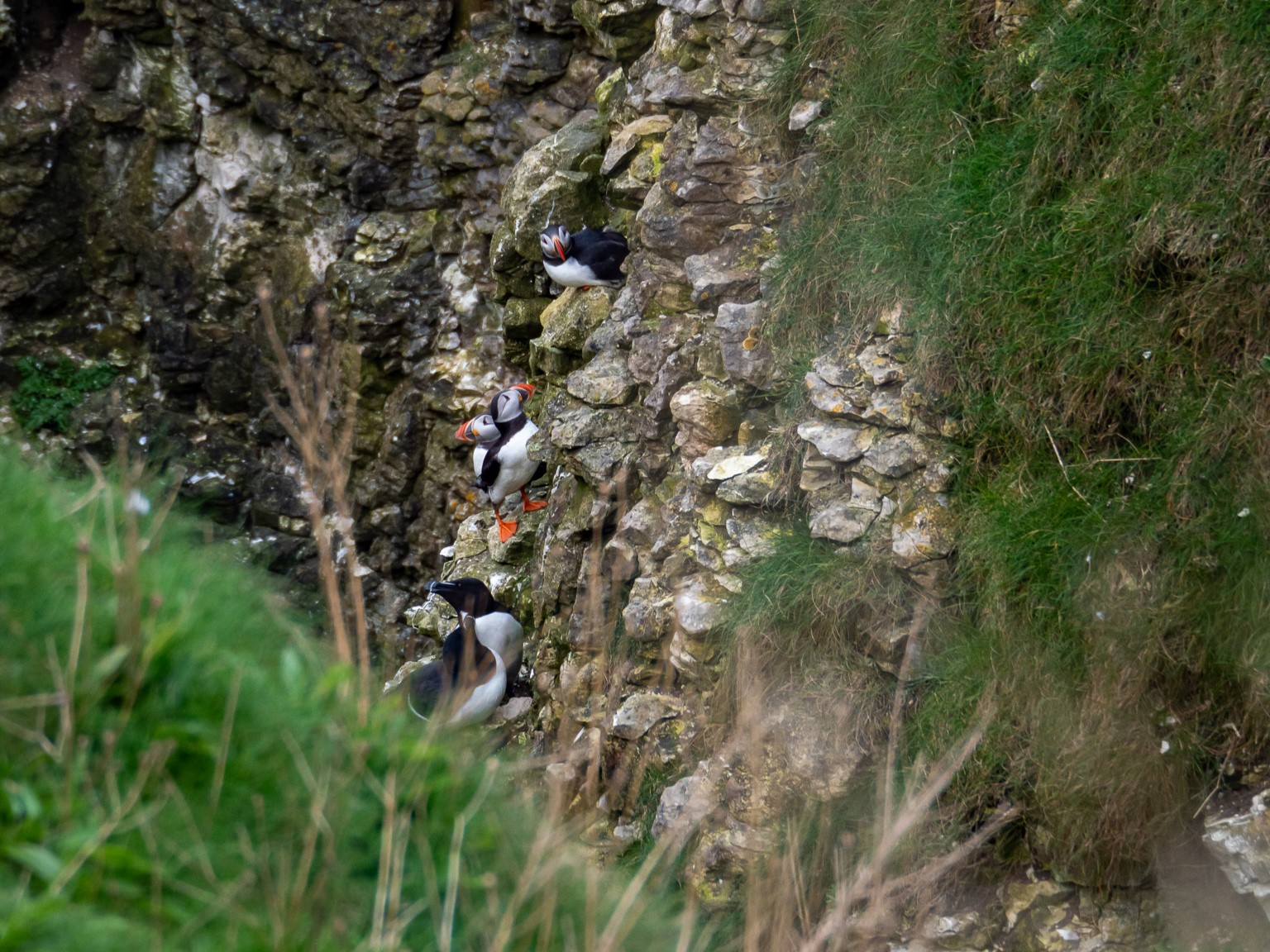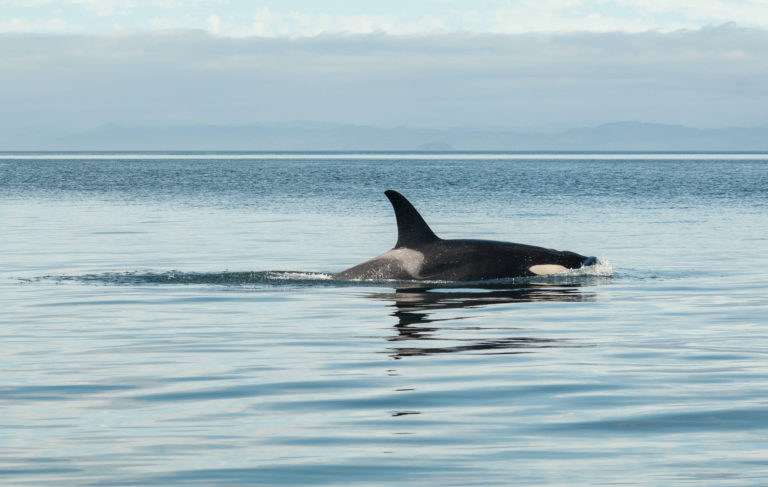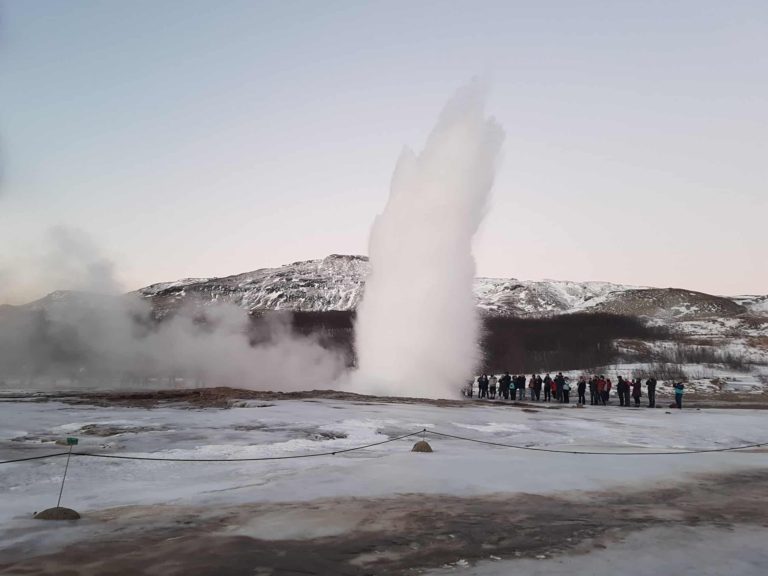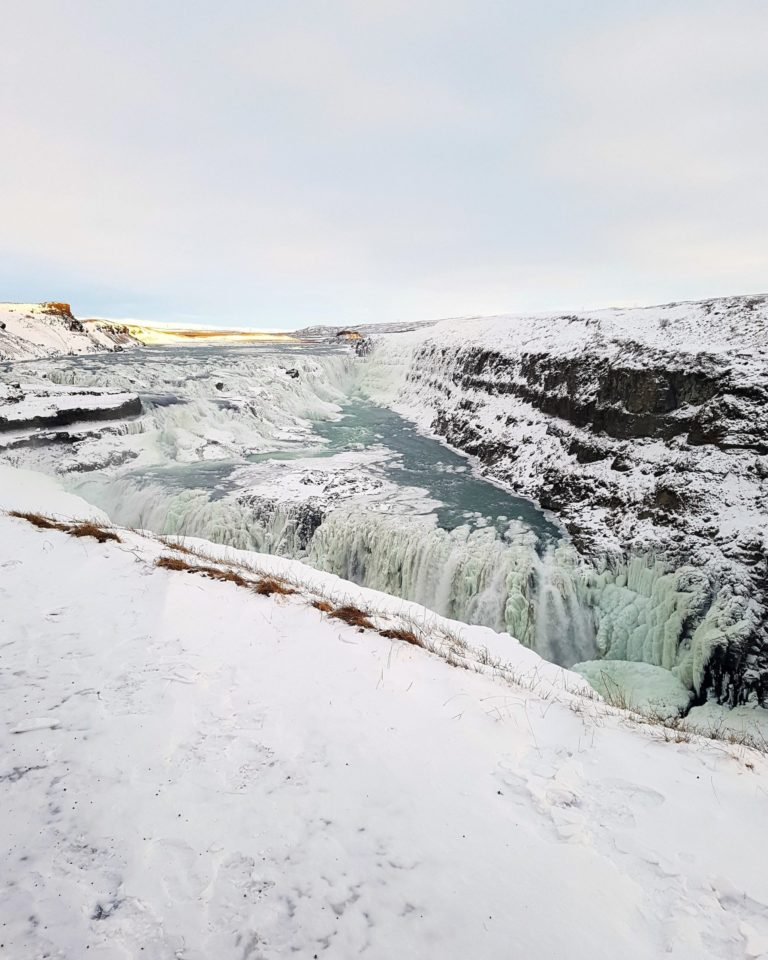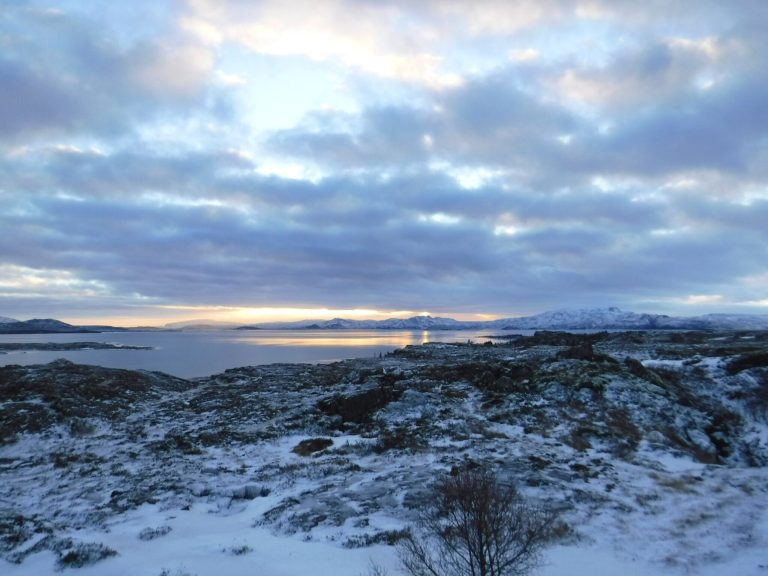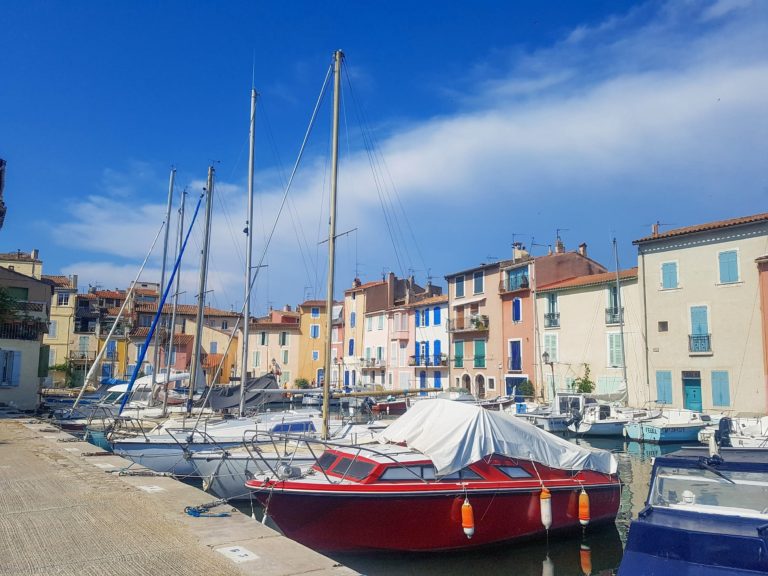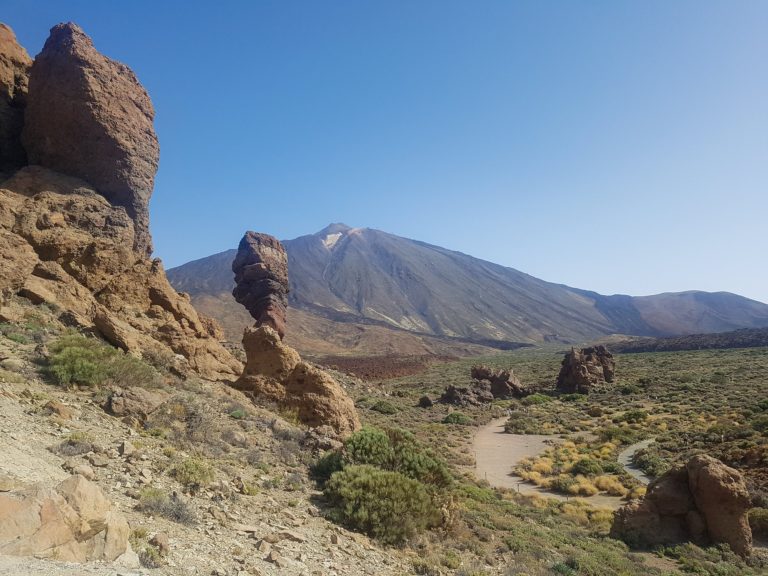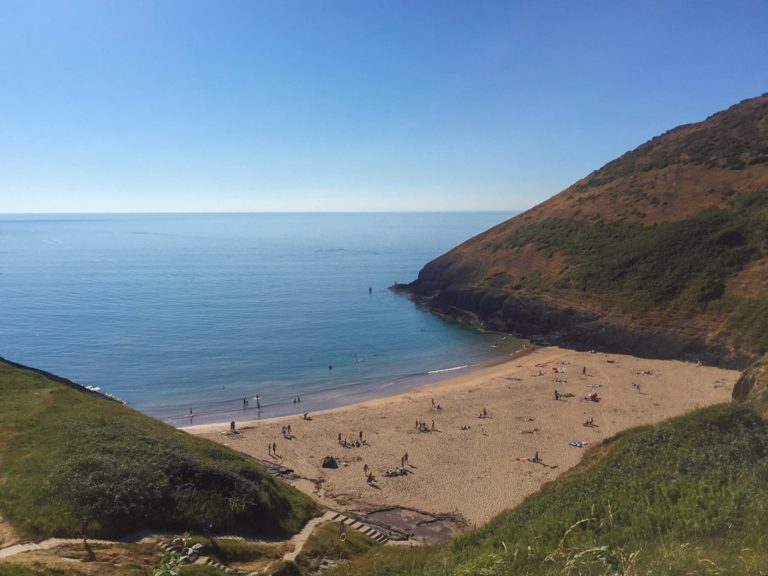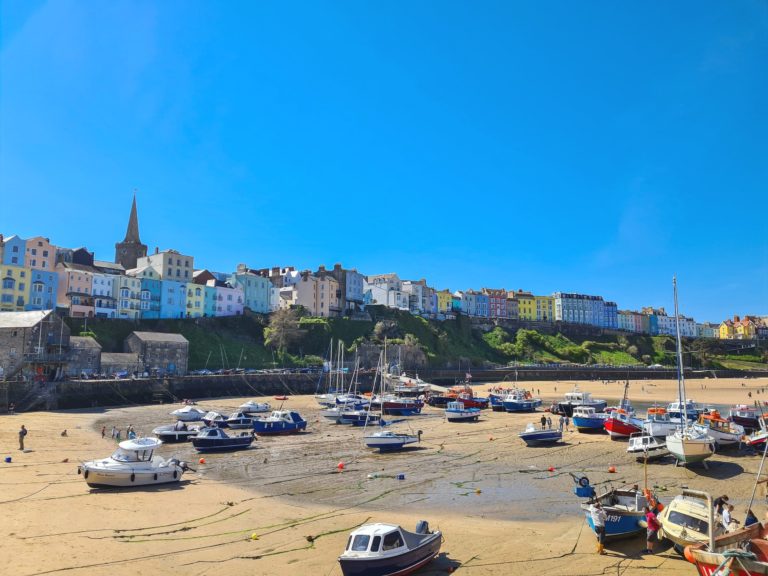How to see Puffins at Bempton Cliffs: A Yorkshire Coast Guide
A complete guide to spotting puffins at Bempton Cliffs, as well as other seabirds and wildlife you can see in the RSPB Nature Reserve.
(Updated 2024)
This post may contain affiliate links, which means we might earn a small commission on anything purchased through these links at no extra cost to you. Learn more on our Disclaimer page.
Built upon a 3 mile (5km) stretch of 120 metre (400ft) tall chalk cliffs, RSPB Bempton Cliffs is a cliff-top nature reserve. In the summer months, Bempton Cliffs welcomes half a million migratory seabirds in one of the best wildlife spectacles in the UK. Overlooking the North Sea, RSPB Bempton Cliffs is a haven for bird watchers and wildlife lovers alike.
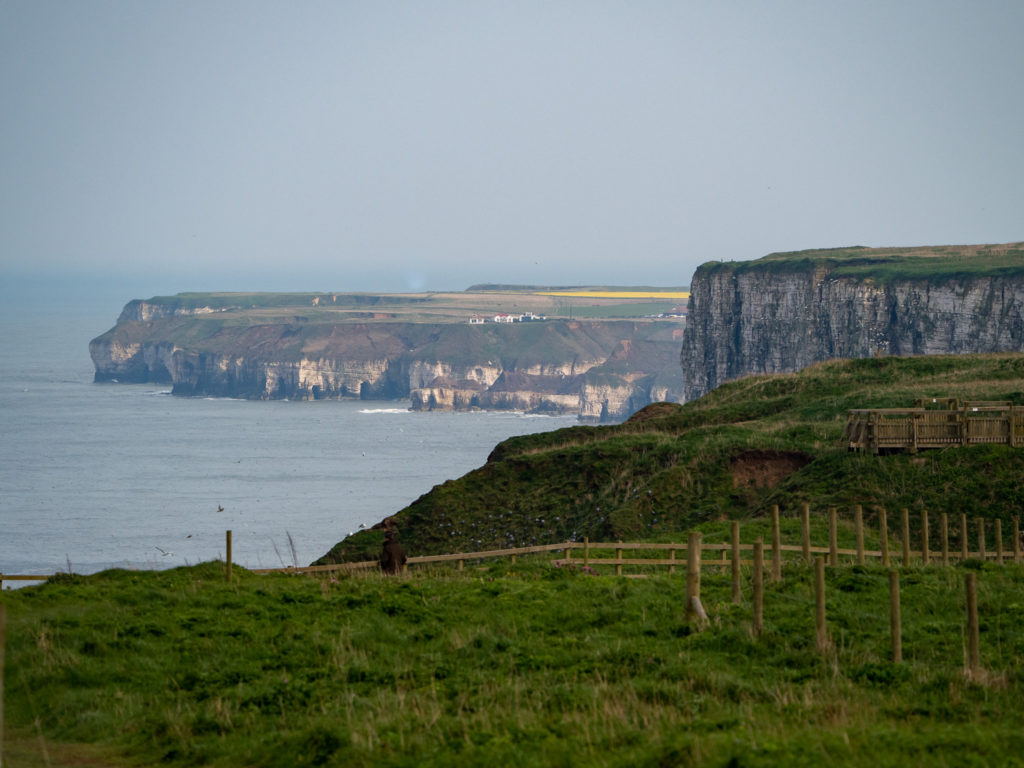
Time needed: 1 day.
When to go: Between May-July for the maximum number of seabirds.
Weather: Typically temperatures sit between 9-18°C (48-64°F), but anything from sunshine to torrential rain and wind.
Language: English.
Currency: Great British Pound.
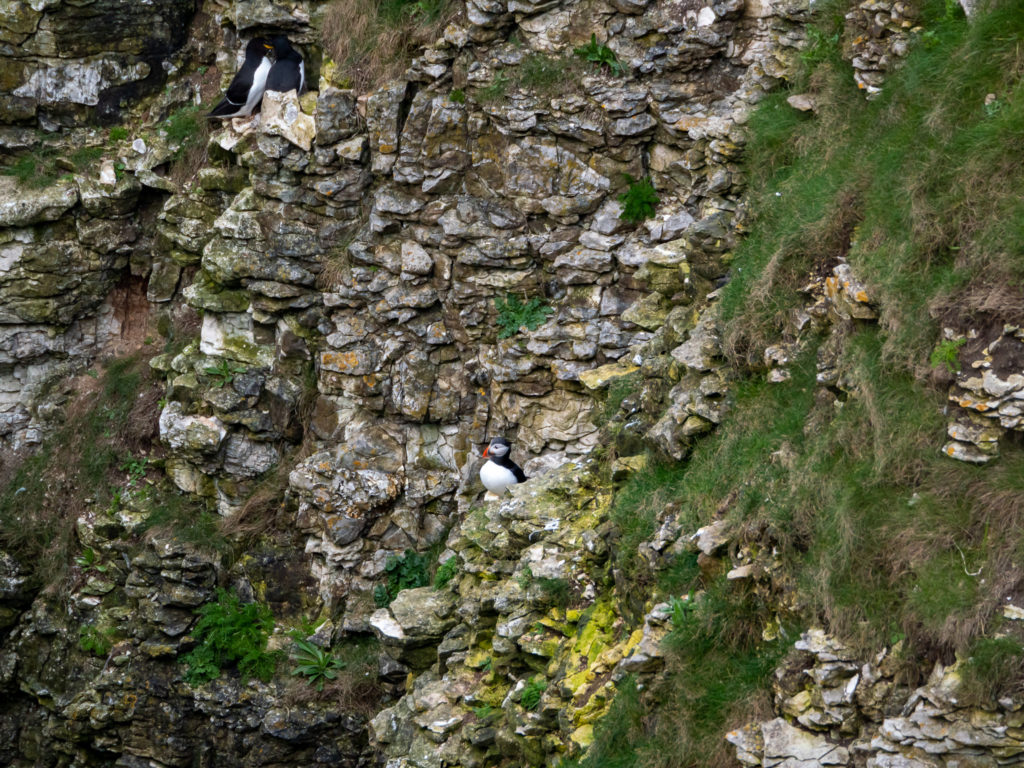
What is RSBP Bempton Cliffs Nature Reserve?
RSPB Bempton Cliffs Nature Reserve is a protected area of chalk cliffs that run along the Yorkshire Coast. The area is an important breeding habitat for multiple species of migratory seabird, including puffins. The reserve is managed by the RSPB (Royal Society for the Protection of Birds), a UK-based charity that aims to protect and conserve healthy environments for local wildlife. The RSPB is the UK’s largest nature conservation charity and has 222 nature reserves across England, Wales, Scotland and Northern Island.
RSPB Bempton Cliffs Nature Reserve is a beautiful place to walk and makes for a great day out. It has six wooden viewpoints, gift shop, café and toilets, as well as an extensive and well maintained coastal path. Binoculars are available for hire and it’s also possible to book onto guided walks.
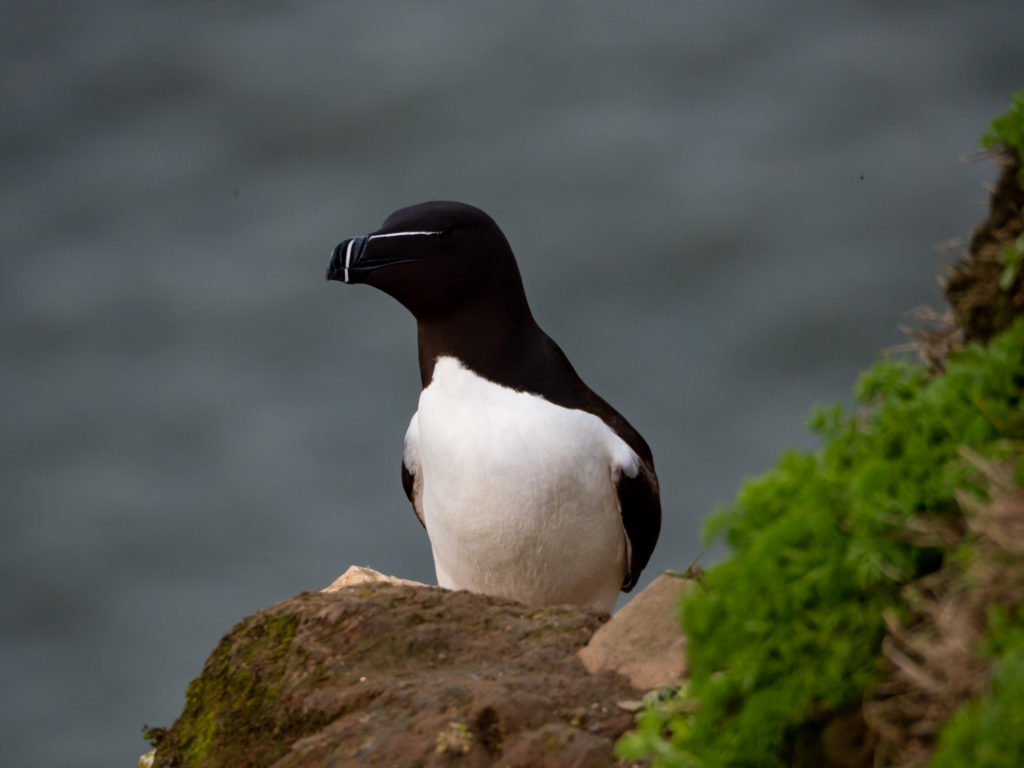
Where is RSPB Bempton Cliffs Nature Reserve?
Overlooking the North Sea, RSPB Bempton Cliffs Nature Reserve is located on the Yorkshire Coast in the North East of England. It lies in the larger Flamborough Outer Headlands Nature Reserve just north of the Flamborough Head Peninsula. The closest large town is the seaside civil parish of Bridlington, while Bempton itself is a small village that you need to drive through to access the reserve.
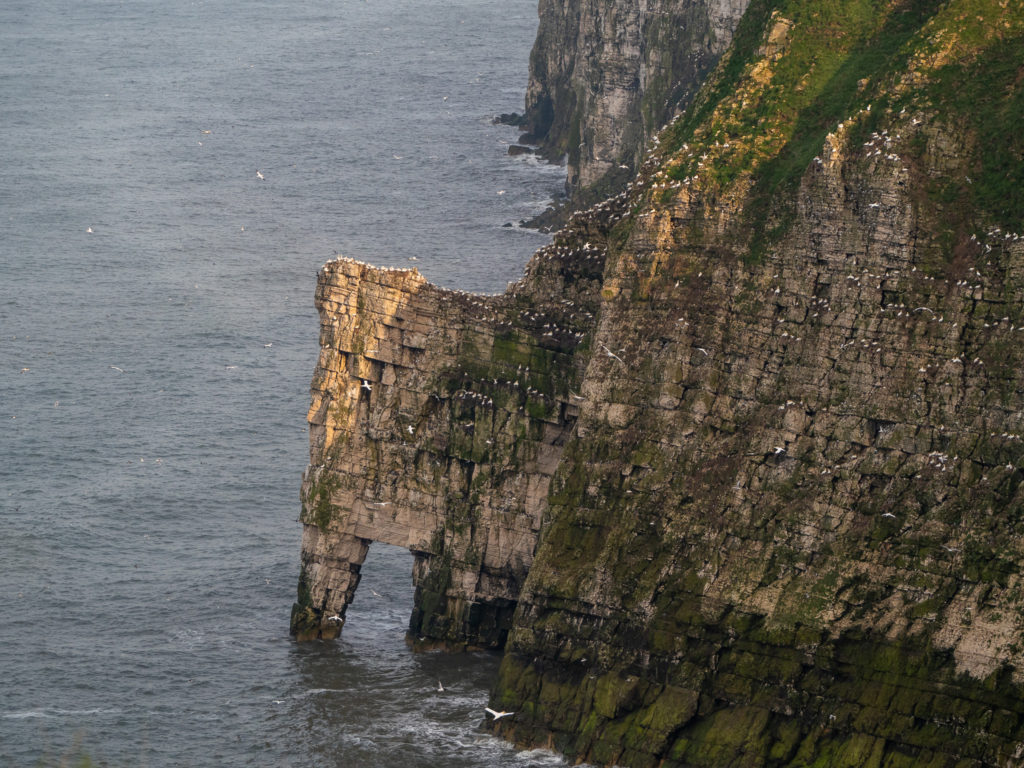
What time of year is best for Bempton Cliffs?
Around half a million seabirds nest at Bempton Cliffs between the months of March to October each year. The best time to visit RSPB Bempton Cliffs is between late April to early July. This is when the adults regularly return to the cliffs to feed fish to their young. More elusive species like puffins can be seen frequently at this time, while the skies are full of thousands of soaring birds, the sounds of their calls (and, if the wind is blowing inland, the smell of their gauno).
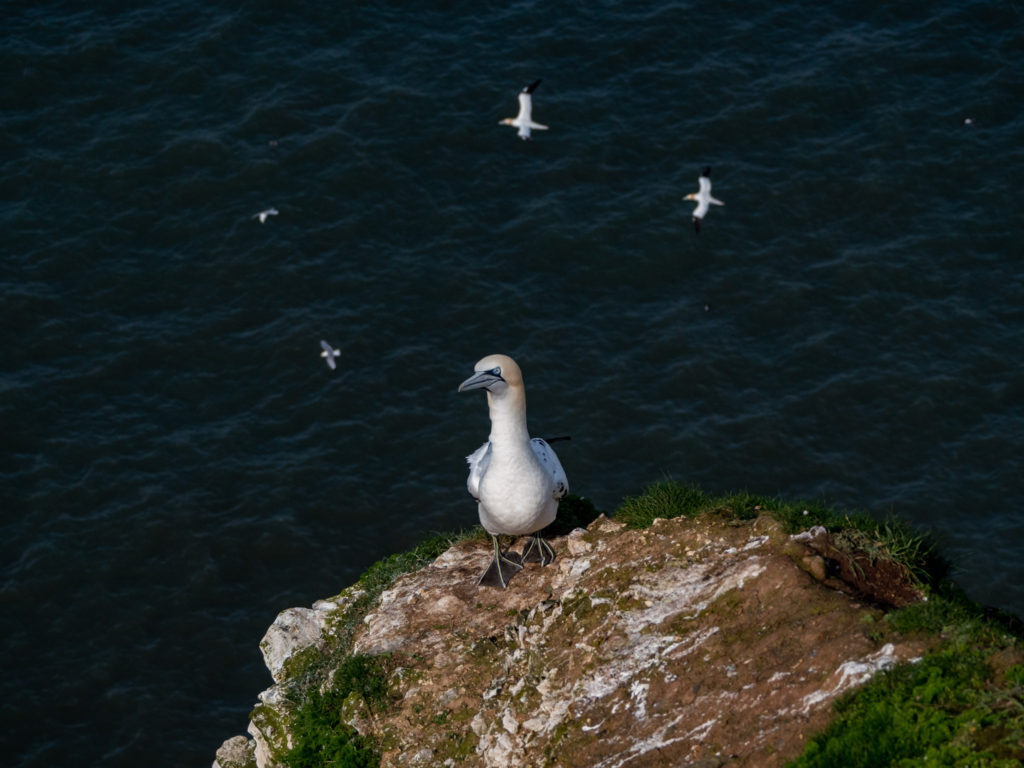
Is Bempton Cliffs worth visiting?
RSPB Bempton Cliffs Nature Reserve is absolutely worth visiting and is one of the best days out on the Yorkshire Coast. The site is an unmissable spot in North East England for birders and wildlife photographers, as hundreds of thousands of migratory seabirds can be seen here annually in one of the UK’s most impressive wildlife spectacles. While regular events are run by the RSPB and are fun for all the family.
Read next: Where And When To See Orca, Whales, Dolphins (+ Other Wildlife) in Orkney
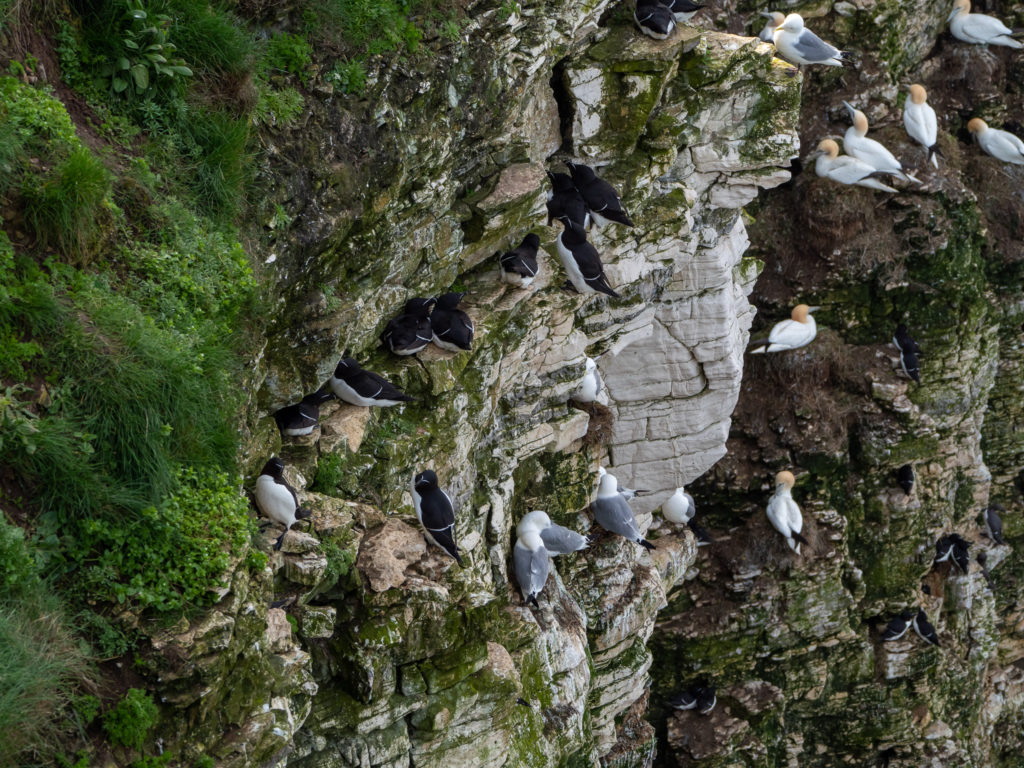
How long is the walk at Bempton Cliffs?
There are a couple of options for walking around Bempton Cliffs. The most popular walk simply follows the path down from the RSPB gift shop and café to the coastal path. From here you can turn either right (south) or left (north). The path is clearly marked and fenced along the top of the cliff so is completely safe. There are 6 wooden platforms from which you can spot birds nesting in the cliffs, bobbing on the ocean or flying around on the thermals. The closest platform (known as the Grandstand) is a 5 minute walk from the car park, while the others can take between 30 minutes to 2 hours to wander between. On our visits to Bempton Cliffs, we’ve often stayed for over 4 hours, as you want plenty of time to watch the seabirds from the platforms.
As well as the cliff-top coastal path, RSPB Bempton Cliffs also offers a nature trail and grandstand trail, which pass through grassland and offer opportunities to see butterflies, hare and deer. There are useful informational signs along each path, as well as at each viewpoint which have information about native species and landscapes. There is also a treasure trail which can be picked up from the visitor centre, which is fun for little ones.
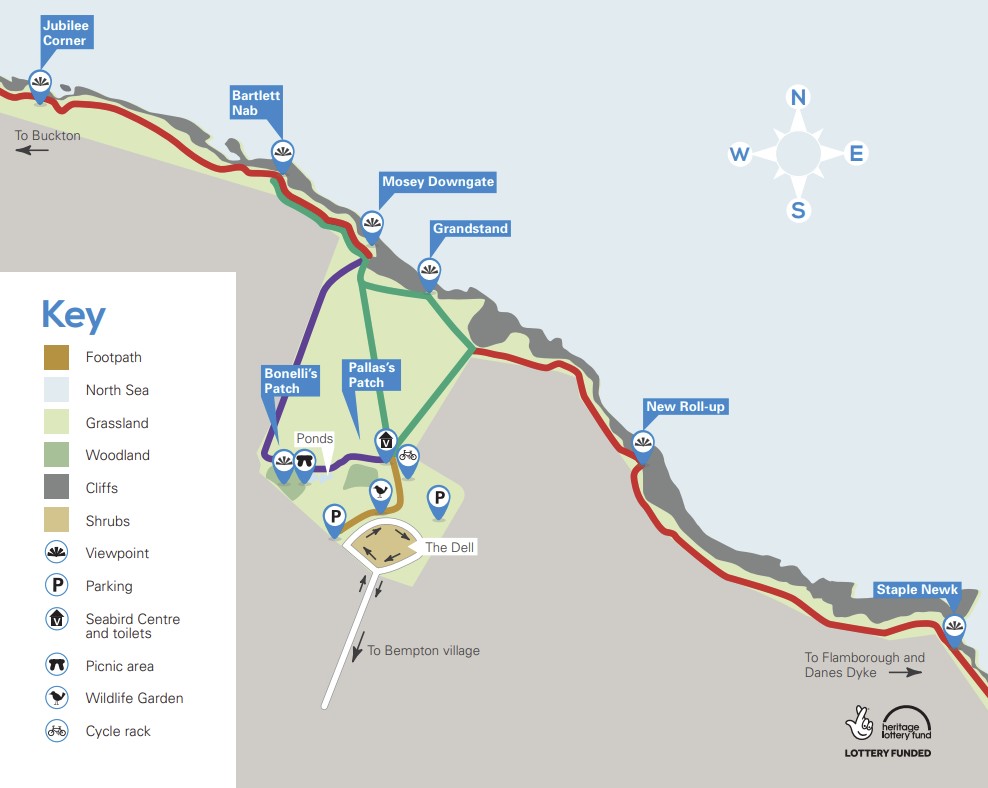
Those who like a longer hike should consider extending their walk either north or south. At either end of the reserve are wooden gates. You’re allowed to pass through both ends and can follow the coastal path further, although these stretches are not fenced or maintained by the RSPB. On busy days, you can often escape the crowds by going a little further and we’ve been told the northern end is a great place to see seabirds closer up too.
To the north of the reserve, you can follow the path from Bempton Cliffs all the way to Filey Bay, passing Mosey Downgate, Bartlett Nab, and Jubilee Corner, along Speeton Sands, Reighton Sands, Humanby Sands, and Muston Sands. The 14 mile (23km) out-and-back track is moderately tricky and takes around 2.5 hours each way (5 hours total). It’s important to keep an eye on the tide times too, as part of the path crosses along a beach.
To the south of Bempton reserve, you can follow the 8.9 mile (14.3km) stretch between Flamborough Head and RSPB Bempton Cliffs. The route is considered moderate and follows the chalk cliffs the whole way. It takes about 2 hours one way (4 hours total).
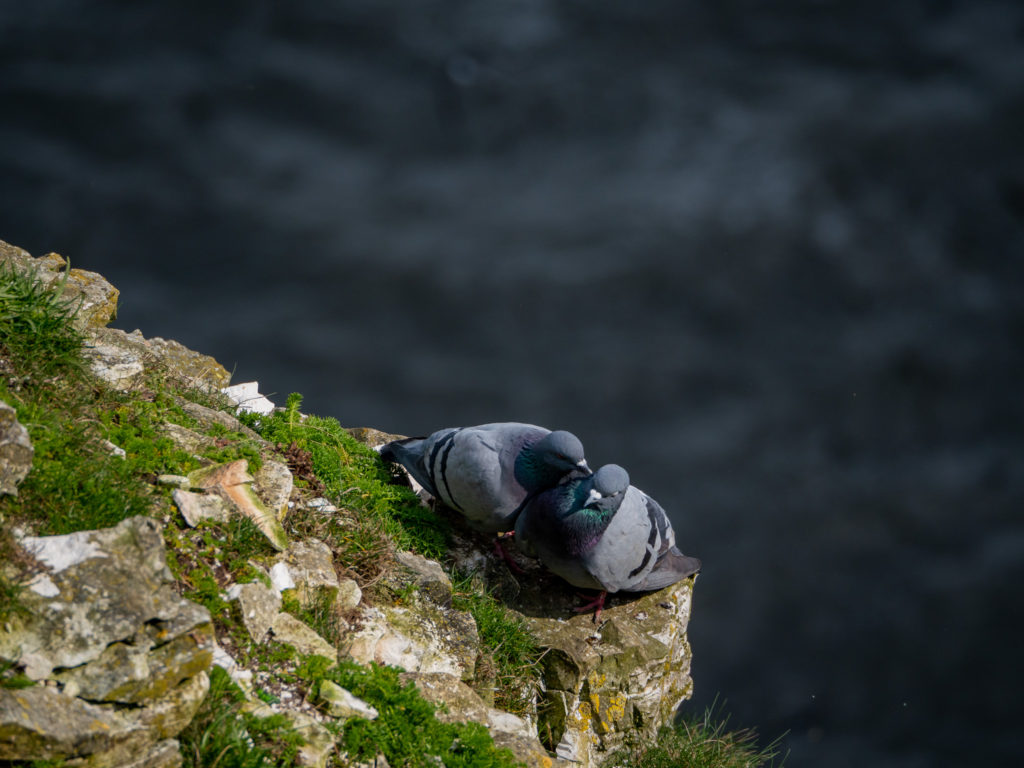
It’s wise to consider if you have time to complete the whole round trip walk before setting off on a hike. Alternatively, it’s possible to park a car at either end of your walk (if you have two cars and are travelling with others), so you can drive off after completing the route one way.
There is also a nice circular route you can follow from Bempton village to the reserve and back. The 4.1 mile (6.6km) circuit takes about 1 hour and 30 minutes of walking, but longer if you like to stop off along the coastal stretch.
Bear in mind that in the autumn and winter months, these paths can become very muddy. As the paths are exposed to the elements, it can often be windy along this stretch of coast too. It’s advisable to wear suitable footwear and layers.
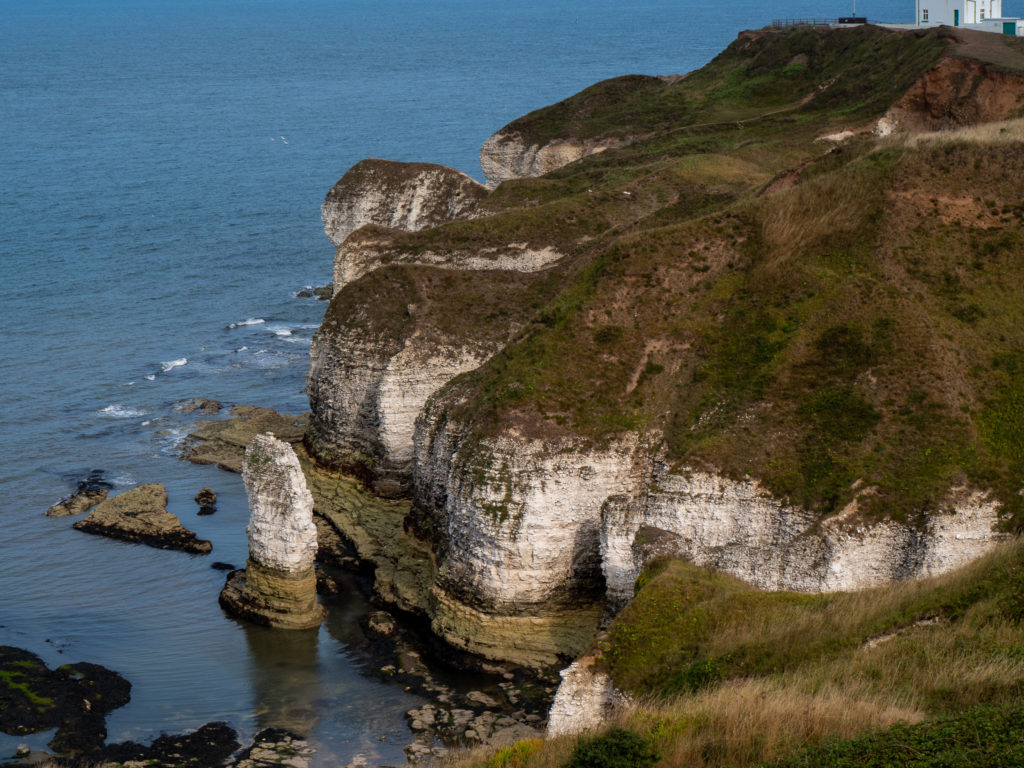
RSPB Bempton Cliffs Sightings
The best way to be up to date with the most recent sightings at Bempton Cliffs is to follow the RSPB Bempton Cliffs Facebook Page. This is also the best place to find out about events, which are frequently held on weekends and in school holidays. There’s even a Yorkshire Puffin Festival, which is held at Flamborough Cliffs annually in Spring. Alternatively, you can head to the Flamborough Bird Observatory to see the most recent daily highlights.
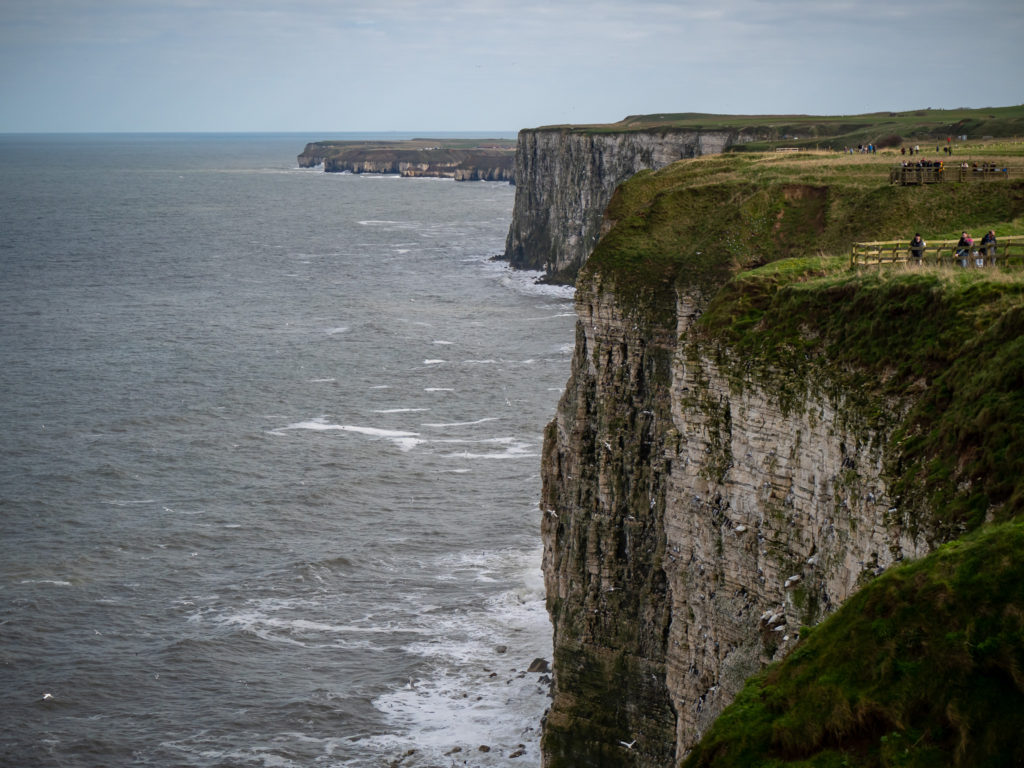
Which birds are currently at Bempton Cliffs?
1) Puffins
The British Isles are home to around 10% of the world’s puffin population. There are several other places where you can see puffins in the UK, including Skomer (Wales), Orkney and Shetland (Scotland), Northumberland (England) and along the west coast of Ireland. But Bempton Cliffs is the only mainland location in the UK where you can see puffins.
Puffins can be seen at Bempton from late April to early August each year, with peak sightings occurring between May to July. Nicknamed the clowns of the sea after their colourful, comedic appearance and bobbing walk, puffins usually burrow into the soft soil at the top of a cliff, creating a burrow. At Bempton Cliffs, the chalk is harder so they use the cracks as ready-made burrows. They lay a single egg in a season and raise their chick monogamously before returning to the open sea, where they spend the winter. Puffins mate for life and couples have been known to spend over 20 years together, often returning to the same burrow each year. Puffins are listed as endangered on the IUCN Red List.
Fun fact: A baby puffin is called a puffling.
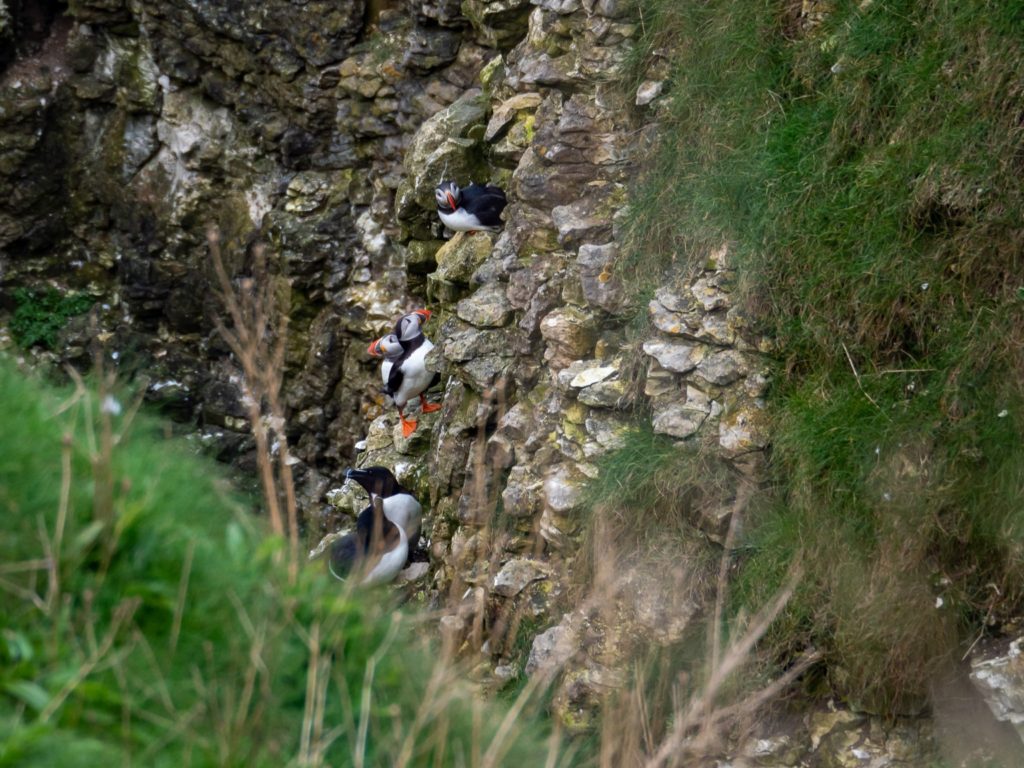
How long do puffins stay at Bempton Cliffs?
Puffins stay at Bempton Cliffs Nature Reserve for about 3 months. They begin to arrive in late April and start settling into their burrows in May each year. By late July most of the chicks have fledged and the adults begin returning back to the open sea. By August all the puffins have left Bempton Cliffs as they spend the winter in the northern oceans.
What time are puffins most active?
Puffins spend most of the day fishing out at sea. You’re most likely to spot puffins at Bempton Cliffs at dawn and dusk. In the evenings, puffins return to their burrows, so this is a great time of day to wait on the cliffs for them to come flying back inland.
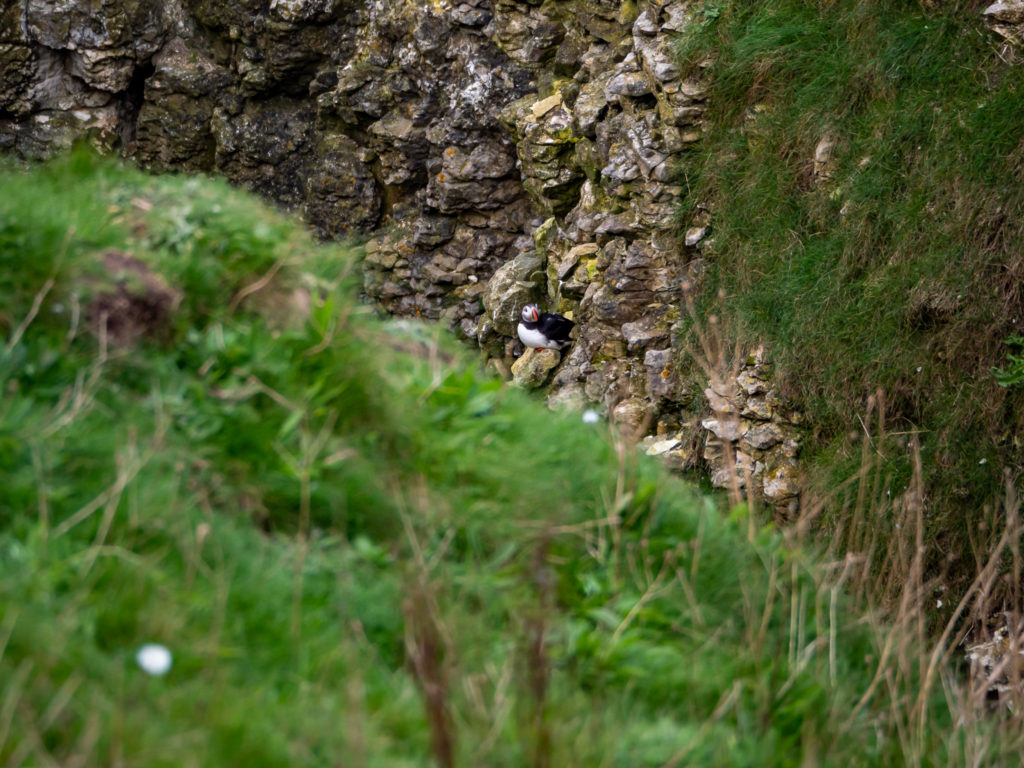
2) Gannets
Gannets are the most common seabird at Bempton Cliffs. They lay one chalky-blue coloured egg a year which they warm on top of their webbed feet. Gannets are the largest seabird in the Northern Atlantic and mate for life. Bempton Cliffs has the largest mainland gannet colony, known as a gannetry, in Britain.
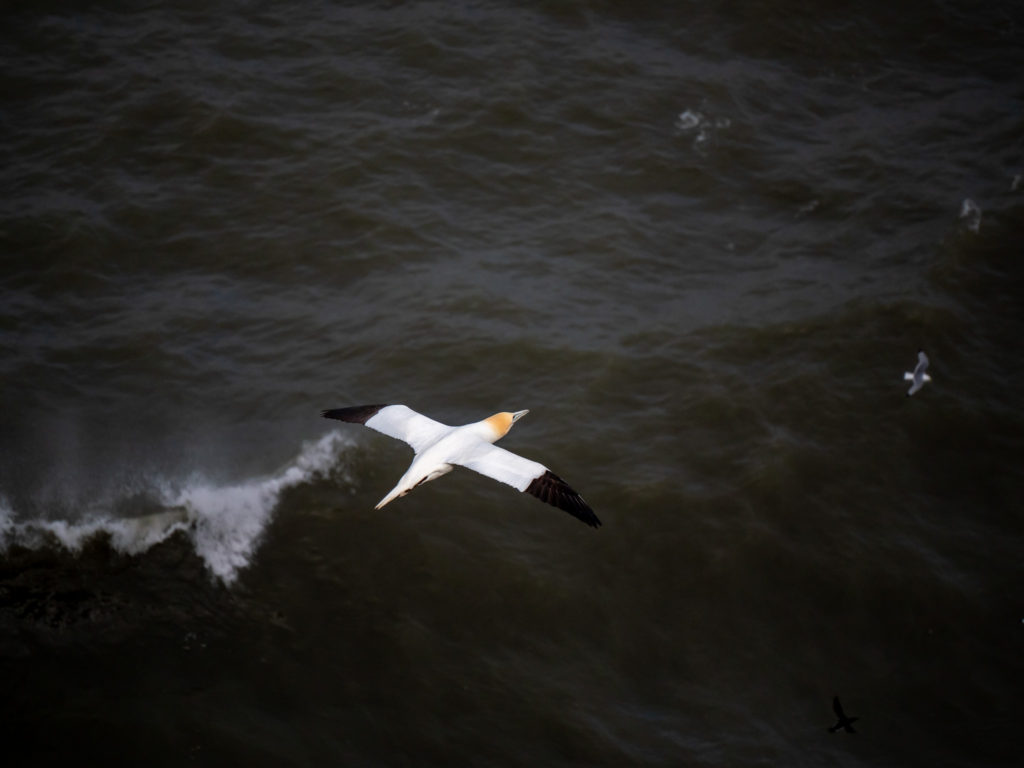
3) Razorbills
Razorbills are monogamous, choosing one partner for life. They lay a single egg each year in the crevices of a cliff-face and the couple raises the egg together. Most razorbills in the UK can be found in Northern Scotland, Ireland, Wales, Cornwall and along the North East coast of England. They only come to shore to breed and spend winter in the Northern Atlantic. Their black and white colouring makes Razorbills look a little like penguins and they are actually the ecological equivalent of penguins in the Northern Hemisphere. They are the closest living relative of the extinct great auk (which was basically just a big penguin). The average lifespan of a razorbill is roughly 13 years, but a bird tagged in the UK in 1967 survived for at least 41 years.
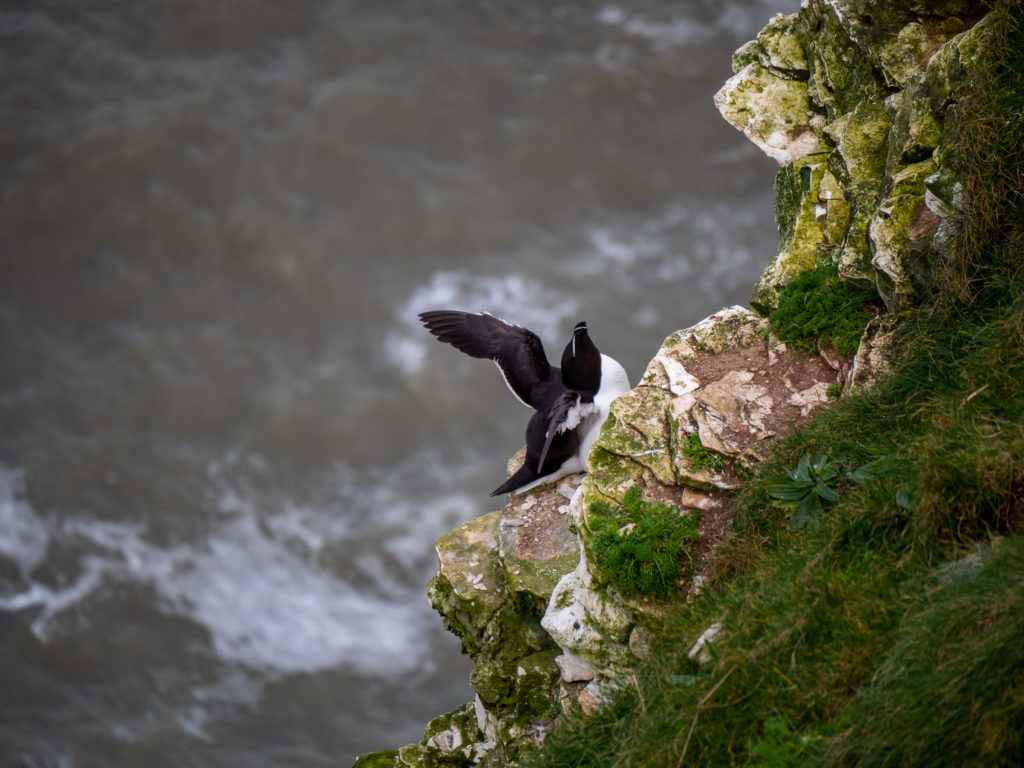
4) Guillemots
Similar to razorbills, guillemots are also small black and white seabirds. However, their beaks are longer and pointier and lack the distinctive white stripe. Unlike puffins, who nest inside the cliffs, guillemots precariously balance their eggs between their feet right on the narrow cliff ledges. To leave the nest, chicks jump right off the cliff, using their wings as a parachute. Their downy feathers protect them from serious harm.
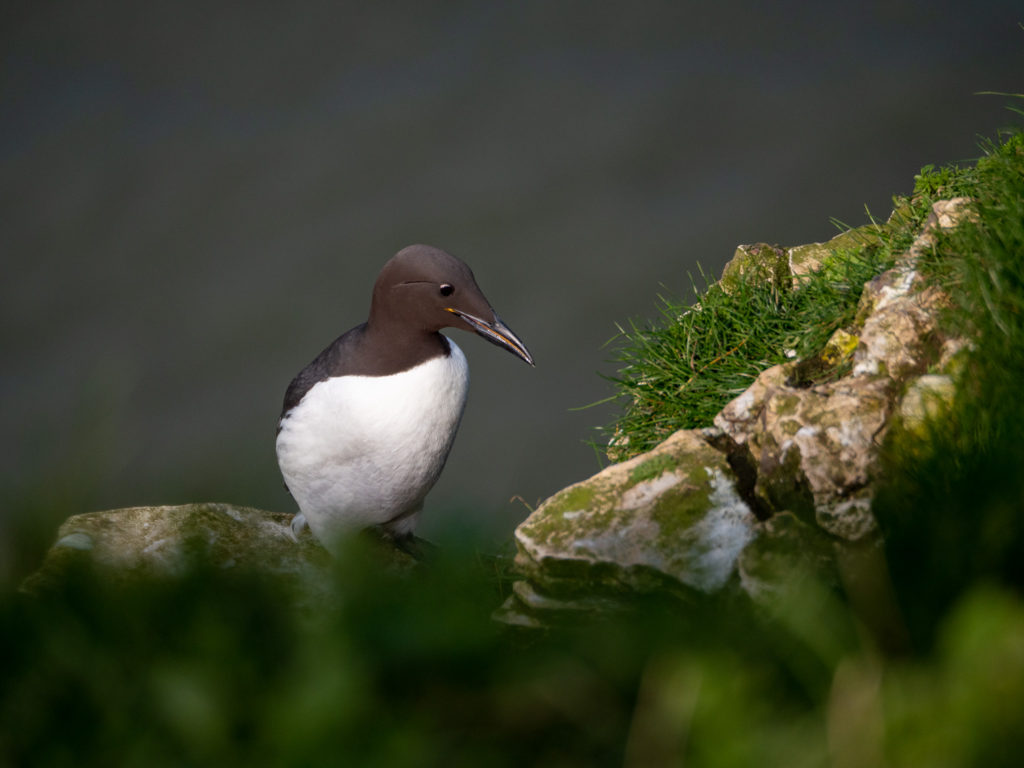
5) Fulmars
Resembling seagulls, fulmars use shallow depressions in bare rock to lay a single egg. Both parents raise the chick together, as fulmars are monogamous. They are known to return to the same nesting site each year and can live for 40-60 years old. they can often be spotted riding the updraughts on the side of tall cliffs.
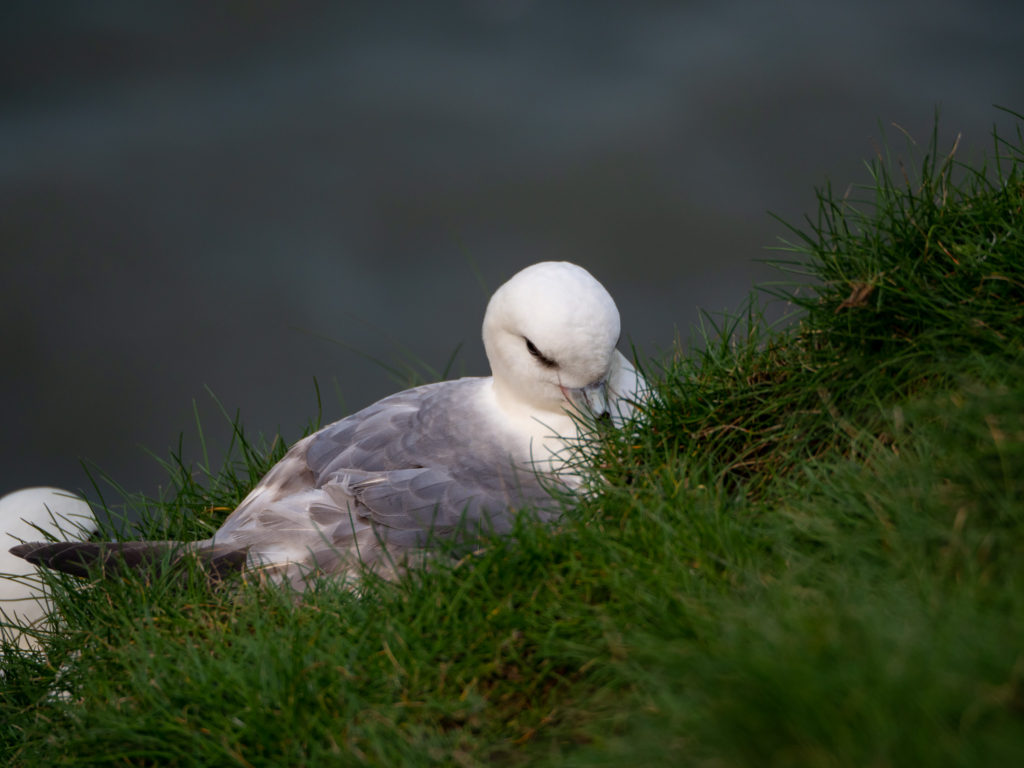
6) Kittiwakes
Similarly, kittiwakes are also biparental. They typically nest in large numbers on seaside cliffs. There are two kinds of kittiwake, black-legged and red-legged. The name kittiwake is derived from the sound of its call, which sounds like a shrill kittee-wa-aaake, kittee-wa-aaake.
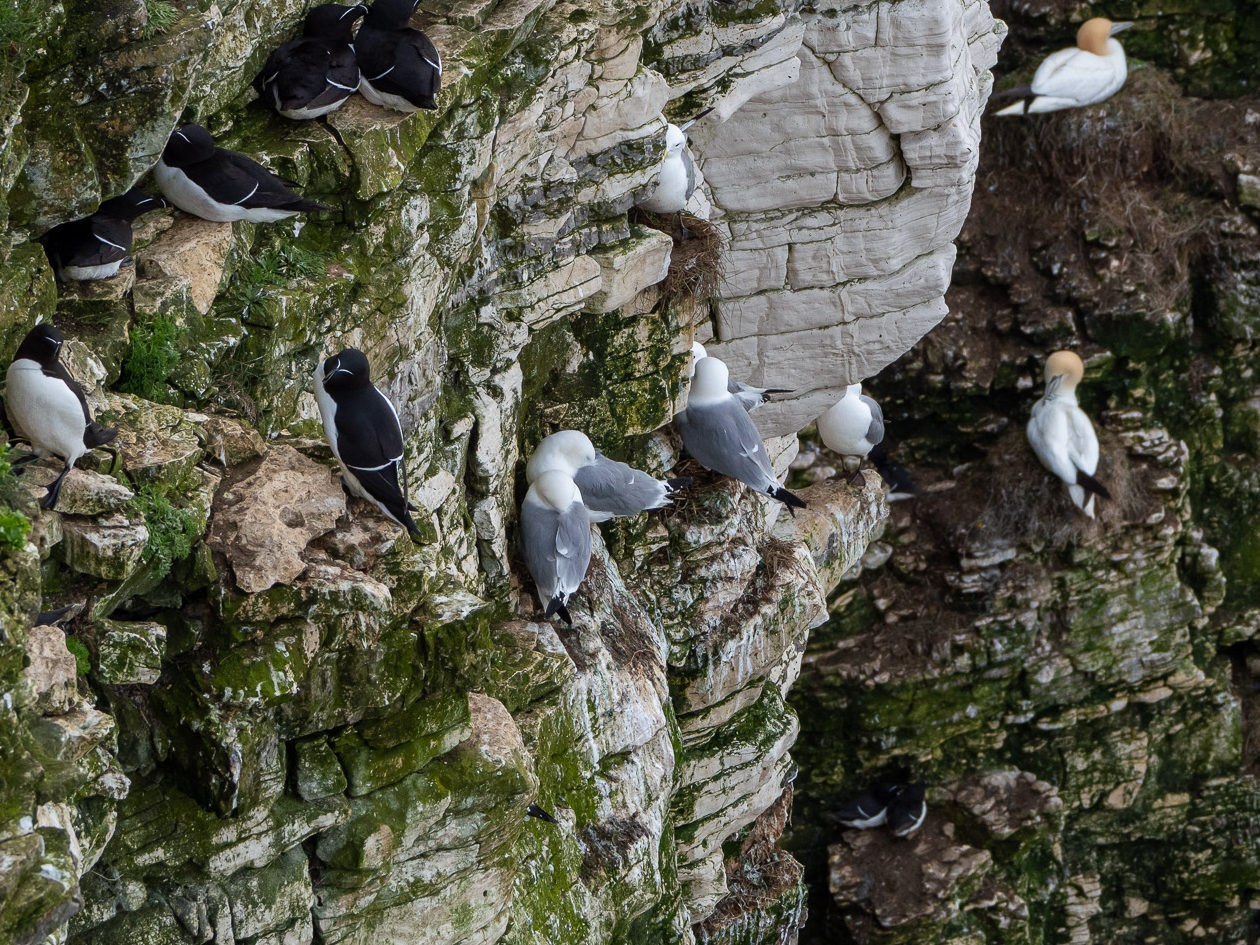
7) Other bird species
Many other kinds of bird can be spotted at Bempton Cliffs and it really is a birder’s paradise. As with any seaside locations, Herring Gulls are common. While Shags, Common Scoters, Sandwich Terns, Arctic Terns, Arctic Skuas, Red-throated Divers and Manx Shearwaters have also all been spotted at Bempton Cliffs in recent years. Ringed Plovers, Marsh Warblers, Redwings, Black Redstarts have been reported too. Different kinds of owl can also be seen, often around dawn and dusk, including Barn and Short-eared.
What is thought to be the only Black-Browed Albatross in the Northern Hemisphere has also bee spotted at Bempton Cliffs. The albatross, nicknamed Albie, was spotted at Bempton Cliffs in 2017, returning in the summers of 2020, 2021 and 2022. He has a wingspan of over 2.4m (7.8ft) wide and is believed to have been blown off course from the South Atlantic oceans in 2014, when he was first spotted around Germany and Scandinavia.
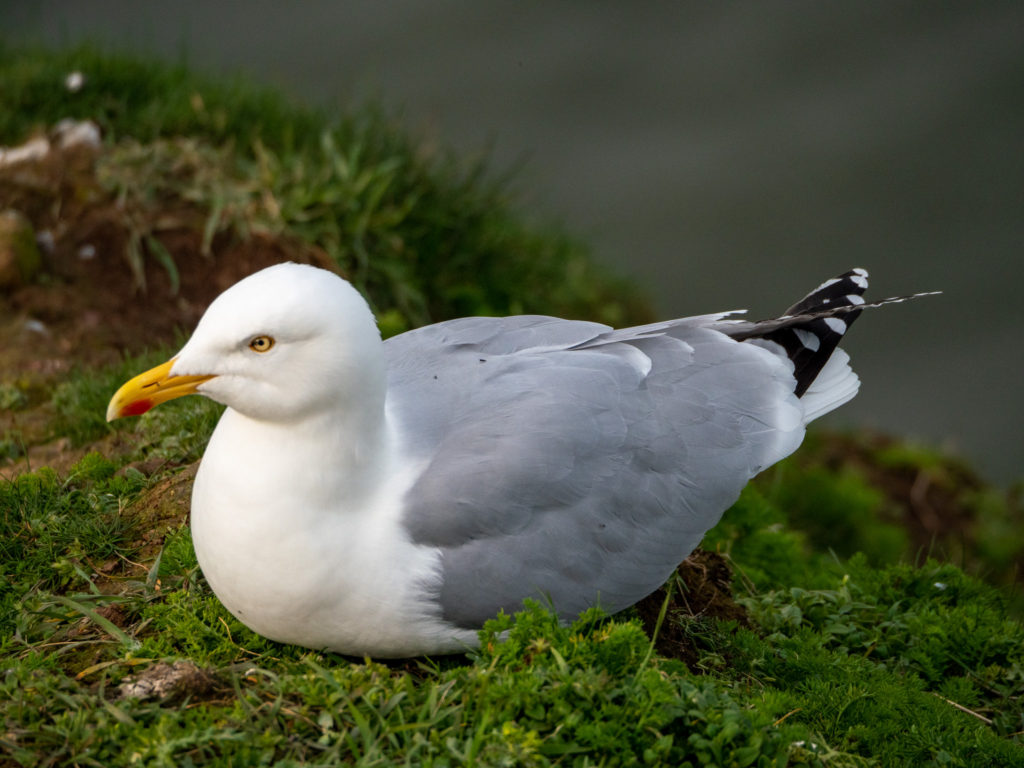
RSPB Bempton Cliffs Boat Trips
Taking a wildlife watching boat trip can be one of the best ways to get up close to animals without disturbing them. There are two ways to book a Bempton Cliffs tour. The first way is to book a bird watching boat trip through the RSPB. The second way is to book a nature cruise directly through Yorkshire Belle, the boat that the RSPB use for their trips.
The RSPB Puffin and Gannet Cruises last two hours and cost between £22.50 – £55.50. On a Puffin and Gannet Cruise, you sail from Bridlington Harbour along the towering cliffs of Bempton Cliffs Nature Reserve. Being on the water allows to get a lot closer to the nesting seabird colonies than the cliff-top coastal path does. RSPB volunteers can help you to identify different bird species and provide interesting commentary on local flora and fauna.
Yorkshire Belle offer a variety of boat trips from 1 to 3 hours long. Their Bempton Cliffs boat trip is 2.5 hours long and is priced at £22.50 for adults aged 17 and over or £11 for children.
Browse RSPB Bempton Cliffs Boat Trips:
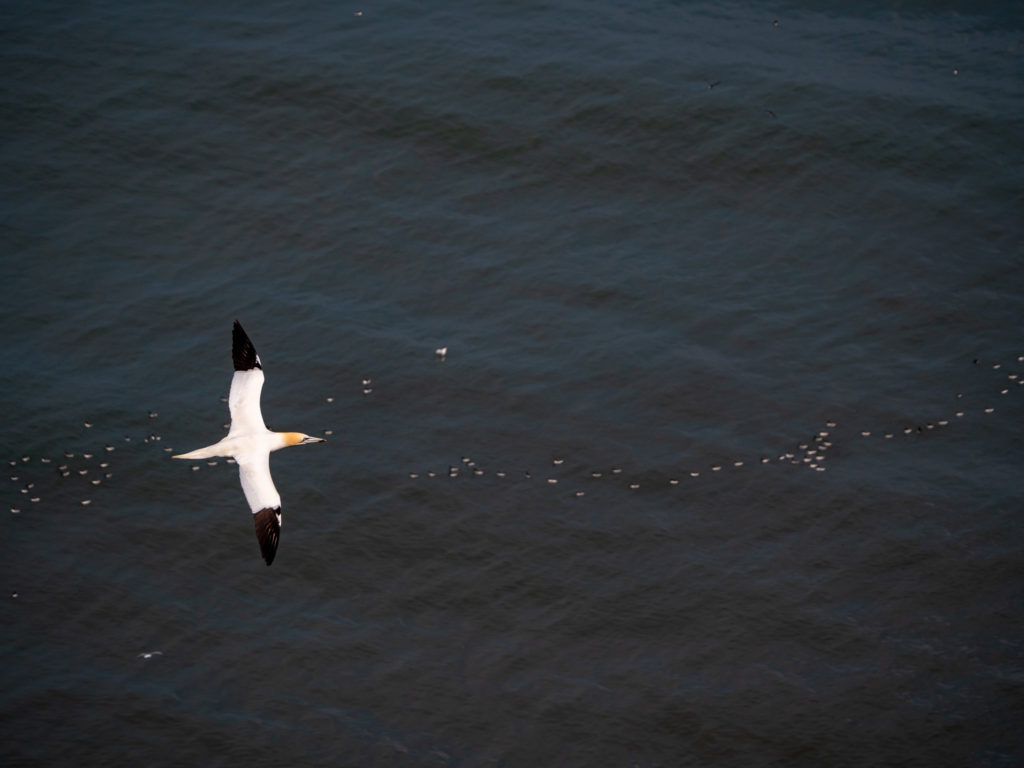
Do you have to pay at Bempton Cliffs?
Technically you don’t have to pay to enter RSPB Bempton Cliffs Nature Reserve, as the path is a public right of way. It’s also possible to access the reserve from the south as part of the longer walk from Flamborough Head, or from the north as part of the longer walk from Filey Bay.
However, we’d strongly recommend you do pay for entry. Most visitors choose to park in the car park at the RSPB visitor centre. Here you can pay the RSPB entry fee, which goes towards maintenance of the reserve and car park, as well as the charity’s conservation efforts.
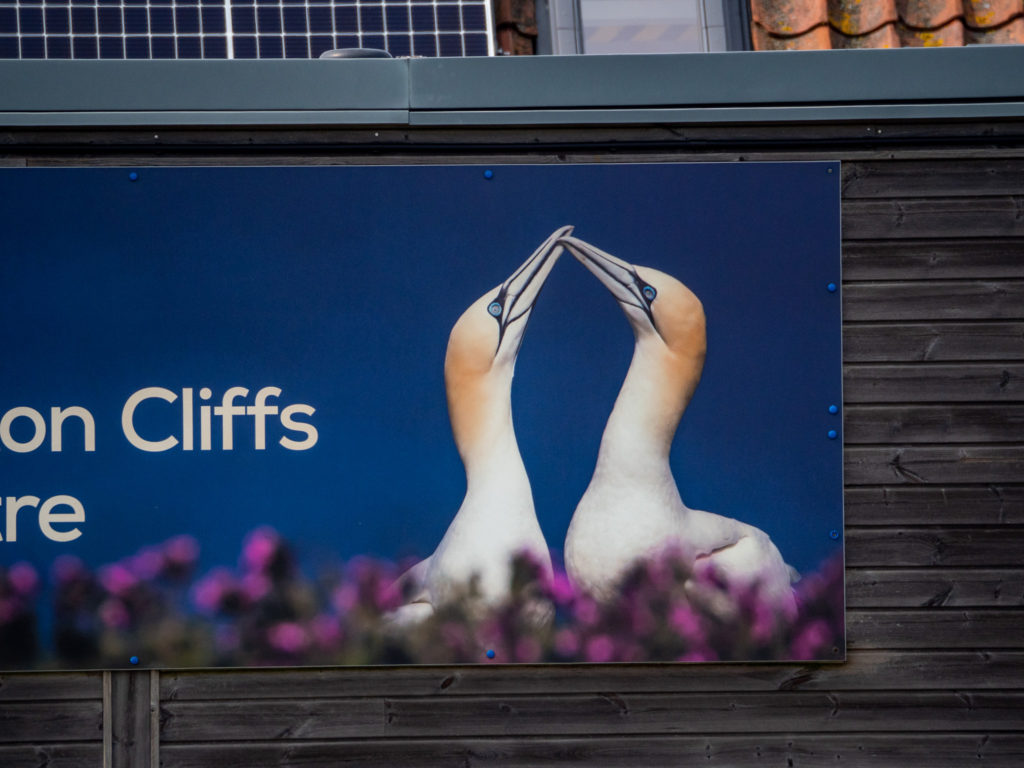
How much does it cost to go to Bempton Cliffs?
RSPB Bempton 2024 admission prices
Adults: £7 (March-October) / £3.50 (November-February).
Children: £3.50 (March-October) / £2 (November-February).
Free entrance for first child.
Free entrance for under 5s.
Student: £5 (March-October) / (£3 November-February).
Carers: Free.
RSPB Members: Free.
RSPB Bempton Cliffs 2024 Opening Times
- Nature reserve: Open daily, dawn-dusk.
- Car park: Open daily, dawn-dusk.
- Visitor Centre: Open daily, 9.30am-5pm (March-October) / 9.30am-4pm (November-February).
- Shop: Open daily, 9.30am-5pm (March-October) / 9.30am-4pm (November-February).
- Café: Open daily, 10am-4pm.
- Toilets: Open daily, 9.30am-5pm (March-October) / 9.30am-4pm (November-February).
Check the RSPB website for festive opening times over Christmas and New Year.
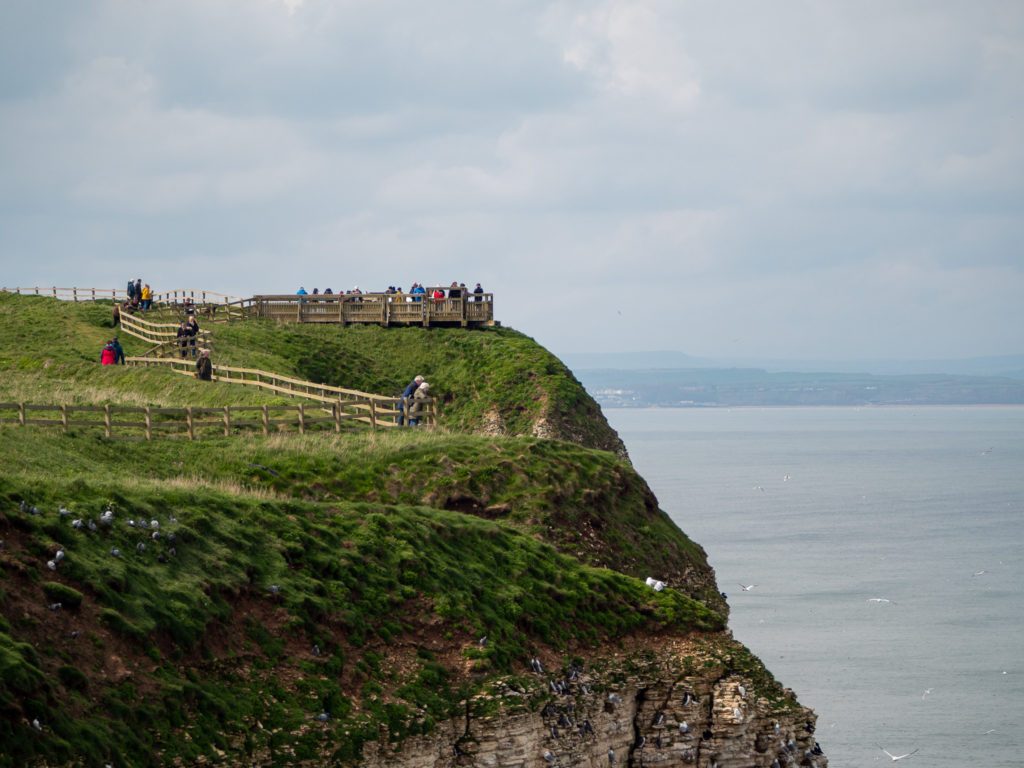
How to get to Bempton Cliffs
By car
Driving is the easiest way to access Bempton Cliffs. The nature reserve is a 30 minute drive from Scarborough and a 10 minute drive from Bridlington. There are plenty of brown road signs depicting the route from the main roads. The postcode for Sat Navs is YO15 1JF.
By train
The nearest train station to Bempton Cliffs is in the village of Bempton, which is on the Hull-Scarborough line. There is a walk of around 1.25 miles (2km) from the station to the reserve.
By bus
There is currently no bus service to the reserve or nearby Bempton village.
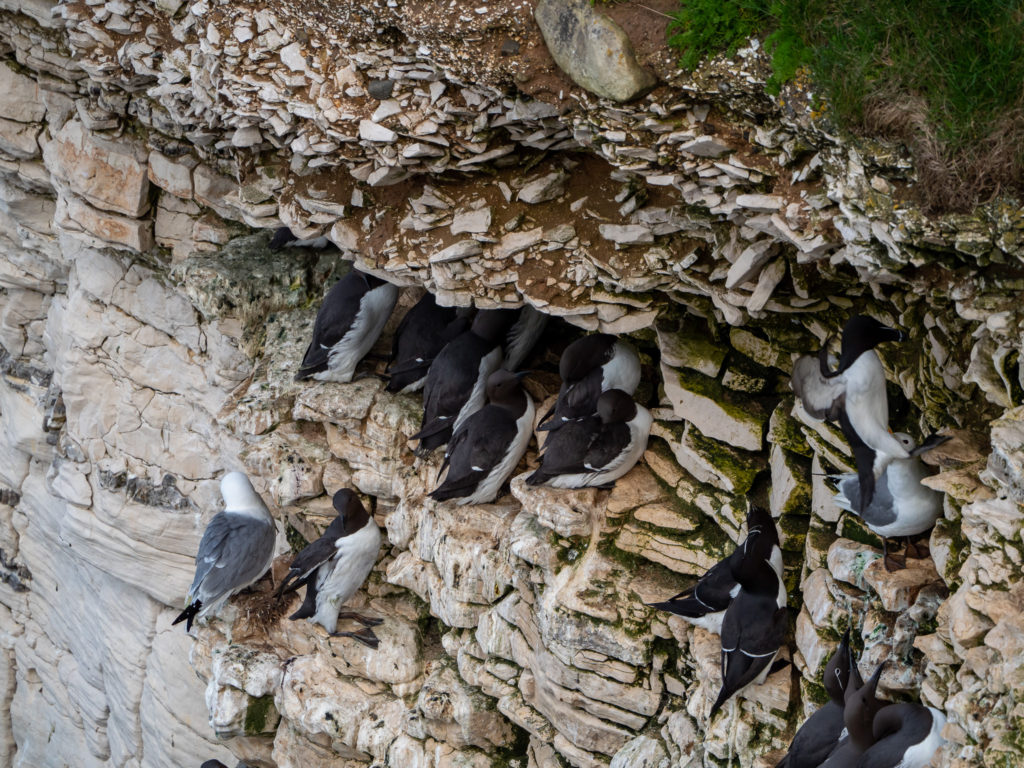
What should you take to Bempton Cliffs?
As the cliffs at Bempton are so tall, it’s a good idea to take a decent pair of binoculars. Binocular hire is available at the gift shop, but it’s best to have your own pair if you’re a keen wildlife spotter. We’d recommend something with a strong magnification and wide field of view. We use the Nikon Prostaff 3S 10×42 Waterproof Binoculars with a 7° field of view (Browse UK | Browse US). And to capture those amazing memories, it’s worth investing in a good camera with telephoto or zoom lens. A tripod or monopod could also be useful. Here are our recommendations of the best cameras for wildlife photography:
- DSLR: Nikon D7500
- Full Frame: Sony A7 III
- APS-C: Fujifilm XT4
- APS-C: Canon EOS R7
- Micro Four Thirds: Olympus OM-D E-M10 Mark IV (our camera)
Read next: The Best Wildlife Photography Camera Settings
It’s also advisable to dress sensibly with decent footwear and layers, as the weather can be unpredictable. There is a café so taking a picnic isn’t necessary but pre-packing your lunch can be a great way to save a bit of money. We always recommend taking plenty of snacks and water on walks. You can check out the best reusable water bottles, chosen by us, here.
Read next: The 15 Best Travel Water Bottles In 2024 From Companies That Give Back
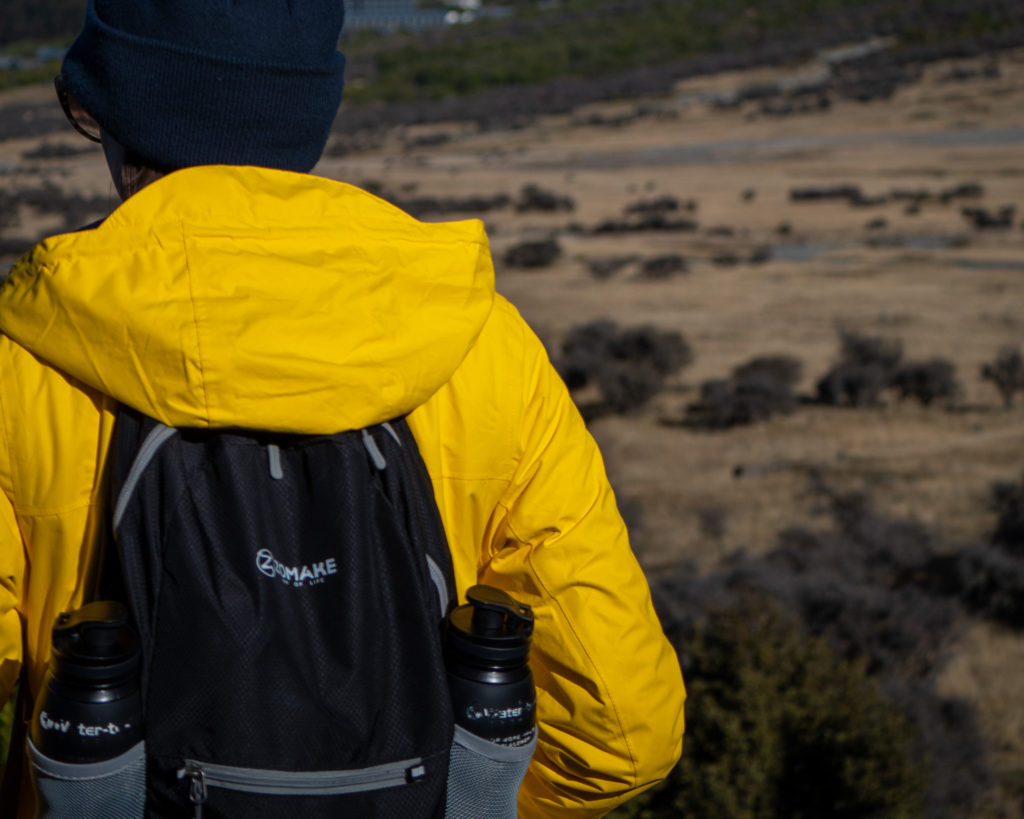
Are dogs allowed at Bempton Cliffs?
Yes, dogs are allowed at Bempton Cliffs, but they must be kept on a lead at all times. The nature reserve is fenced but it’s a good idea to be careful as the path does go close to the edge of the cliffs. Seabirds can also sometimes be found crossing the paths so it’s a good idea to keep an eye out, especially if you have a dog with a high prey drive.
Water bowls for dogs are located at the back of the visitor centre, and they are allowed inside the gift shop and café.
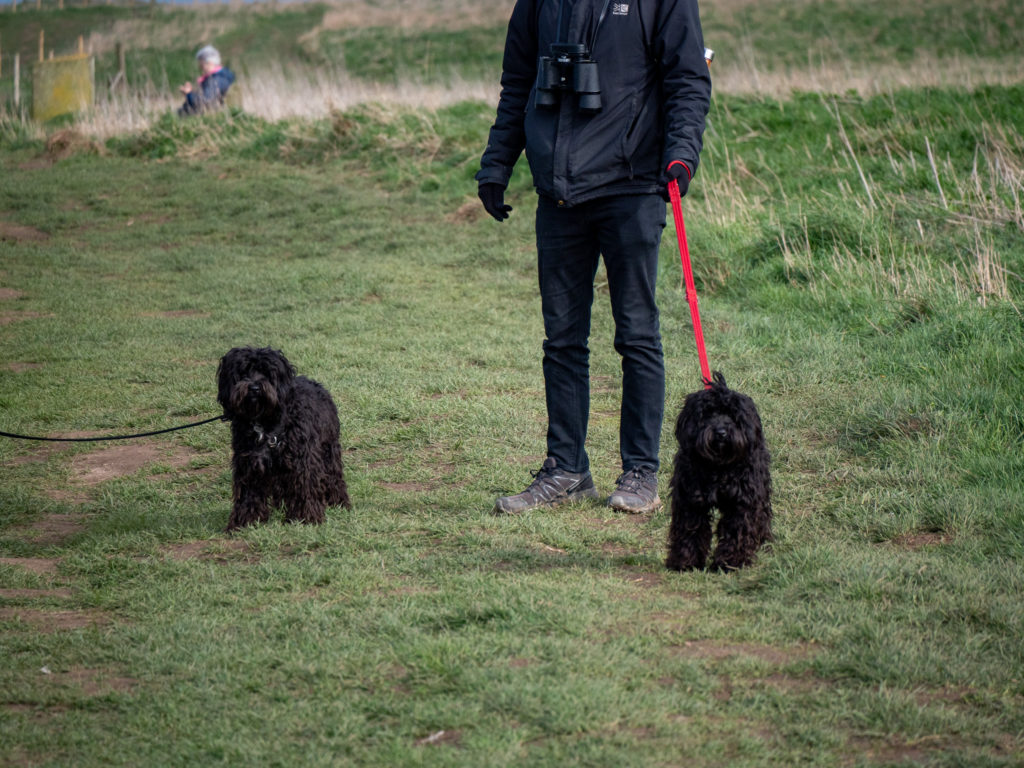
What other wildlife can you see at Bempton Cliffs?
Bempton Cliffs is a haven for bird watchers, but it’s also home to a diverse range of other animals too. Cetaceans like porpoises and dolphins are frequently spotted off the Yorkshire Coast and Bempton is one of the best places in North East England to see dolphins and whales. Migratory whales can be seen of Bempton Cliffs between August and October. The main species of whale seen at Bempton Cliffs is a minke, but humpback, sei and fin, have also been spotted from the cliffs in the nature reserve.
We got super lucky on one of our visits and saw a pod of 15+ bottlenose dolphins just before we were about to leave. If you’d like to be alerted to current and recent cetaceans sightings at Bempton Cliffs, you can join the North East Cetacean Project Facebook Group.
Read next: Where And When To See Orca, Whales, Dolphins (+ Other Wildlife) in Orkney, Scotland
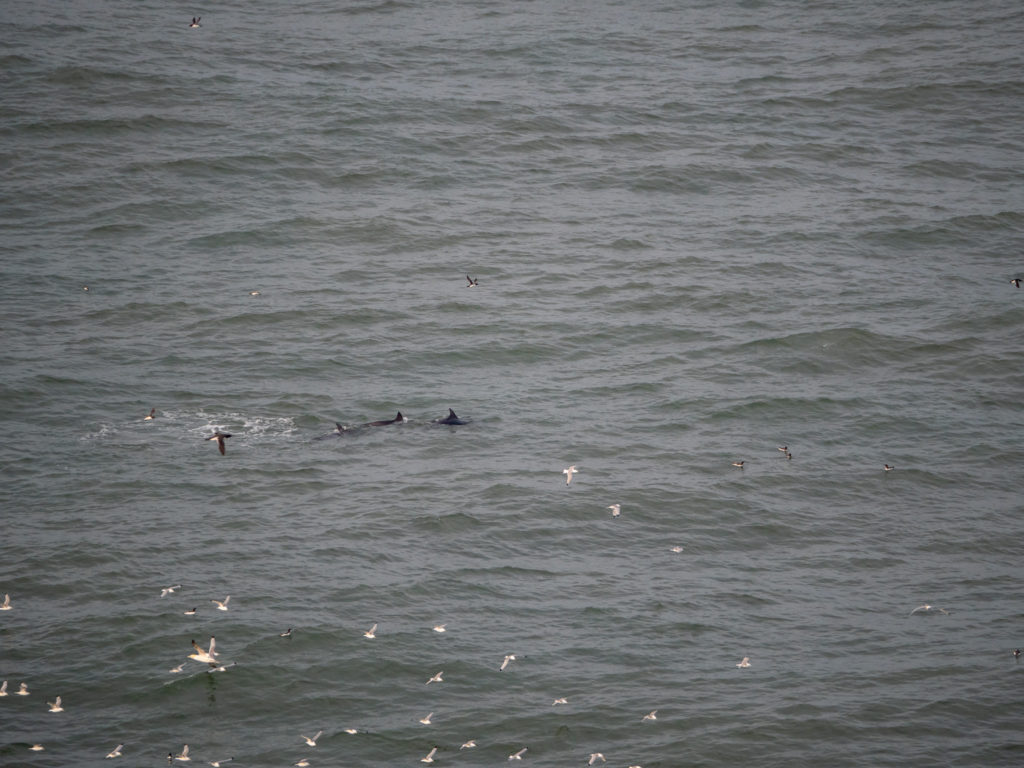
Harbour seals (also known as common seals) can also be seen along the Yorkshire Coast and are frequently spotted swimming along the cliffs at Bempton. The best place to see them however is slightly down the coast at Flamborough Head, where a large colony can be found during pup season in Autumn.
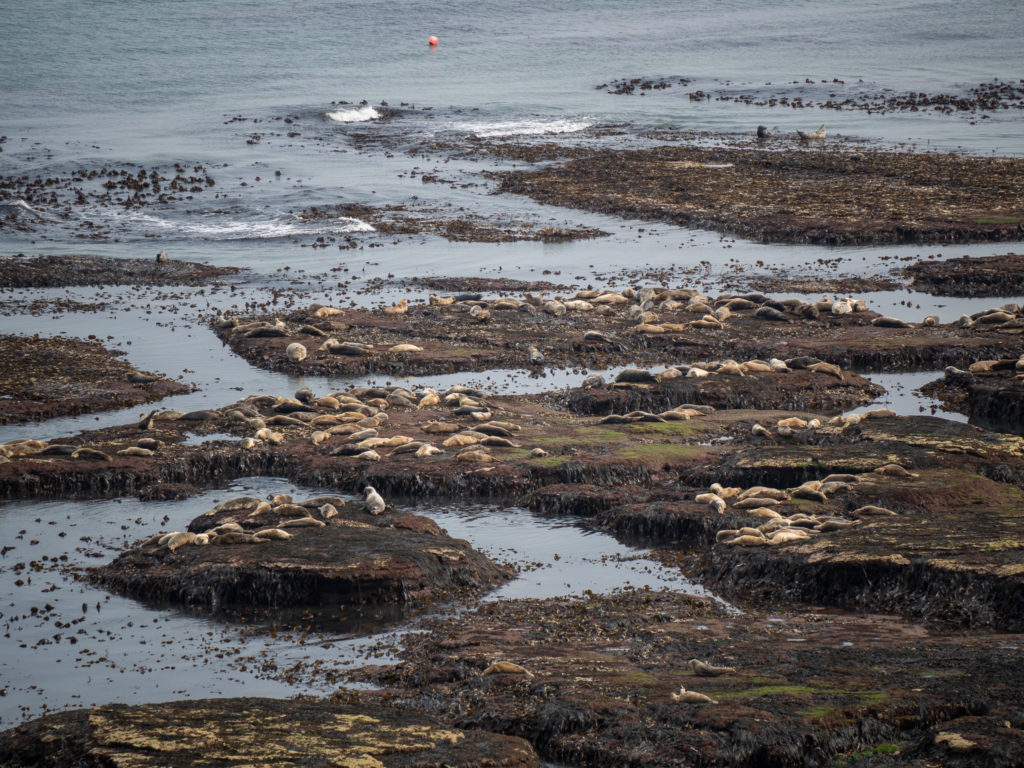
Threats to seabirds at RSPB Bempton
It’s well reported that British seabird populations are in decline. Like most marine species, seabirds face modern threats including the destruction of breeding sites, ocean pollution (e.g. oil spills and plastic), declining fish stocks and the deterioration of food quality. Climate change is a huge issue as warming ocean temperatures and rising sea levels disrupt the natural migratory patterns of seabirds. Ground predators like mink have also become a growing threat. Many of the seabird species at Bempton Cliffs are only produce one egg a year so are at further risk as their reproduction rate is low.
Read next: Let’s Talk About The Plastic Problem: Environmental Impacts of Plastic Pollution
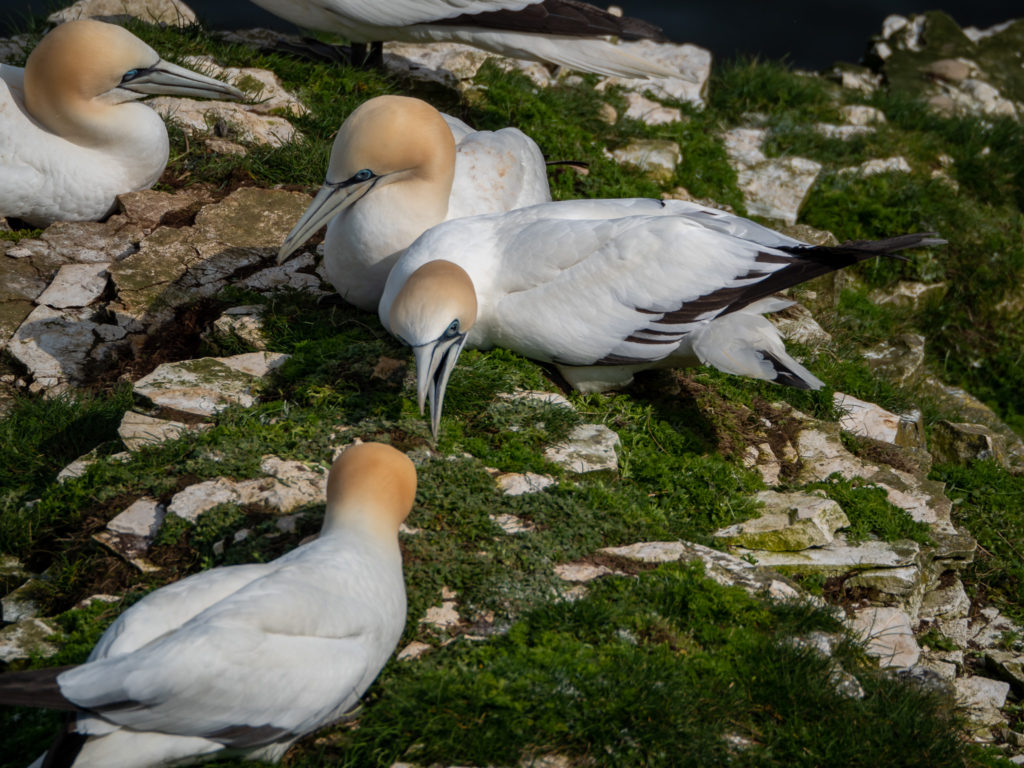
What is there to do near Bempton Cliffs?
We may be biased, but the Yorkshire Coast is one of the most beautiful places in the world. From charming seaside villages to sprawling beaches and expansive cliff-tops, there’s plenty more to do near Bempton Cliffs.
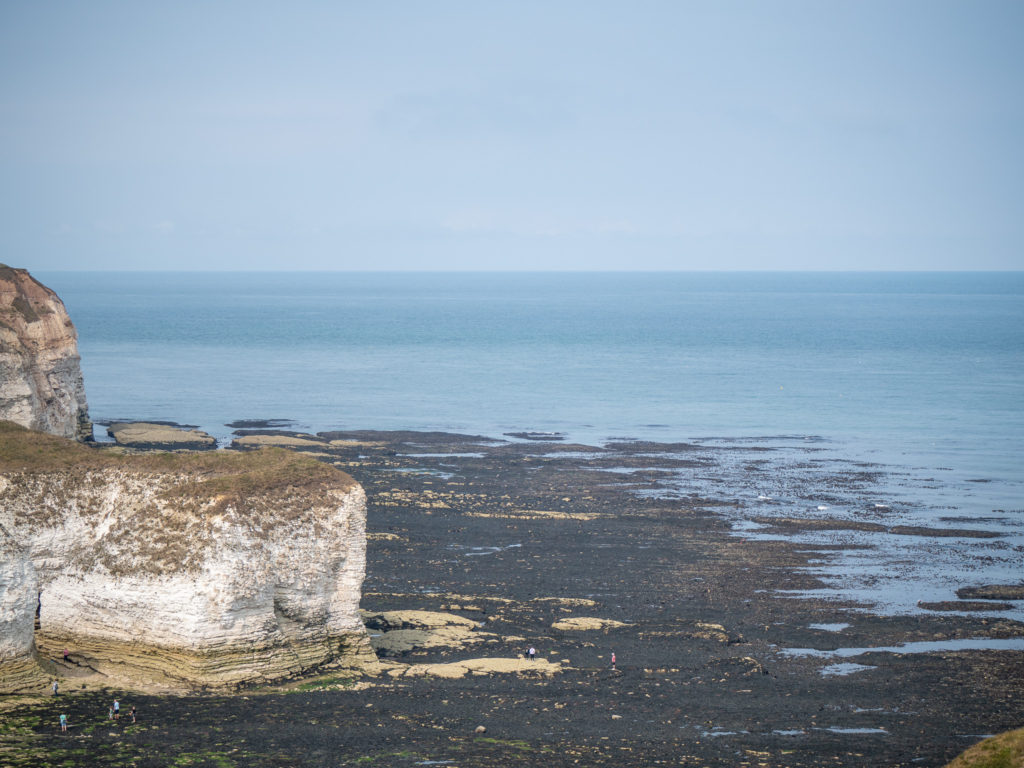
1) Flamborough Head
The chalk cliffs of Flamborough Head stretch 8 miles (13km) along the Yorkshire Coast. They are known for two standing lighthouse towers, dating back to 1669 and 1806. There is a beautiful, cliff-top walk which you can do from the north car park. There are beaches, bays, a sea arch and a stack known as The Drinking Dinosaur. The walk between North Landing and Breill Newk is also a great place to see puffins between spring and summer.
Harbour seals, also known as common seals, can be spotted on the rocks below the cliffs. A large colony often forms here in pup season, during autumn and winter. The North Landing, South Landing and Lighthouse car parks are pay and display, but the one at Thornwick Bay is free. A bus runs between Flamborough and Bridlington.
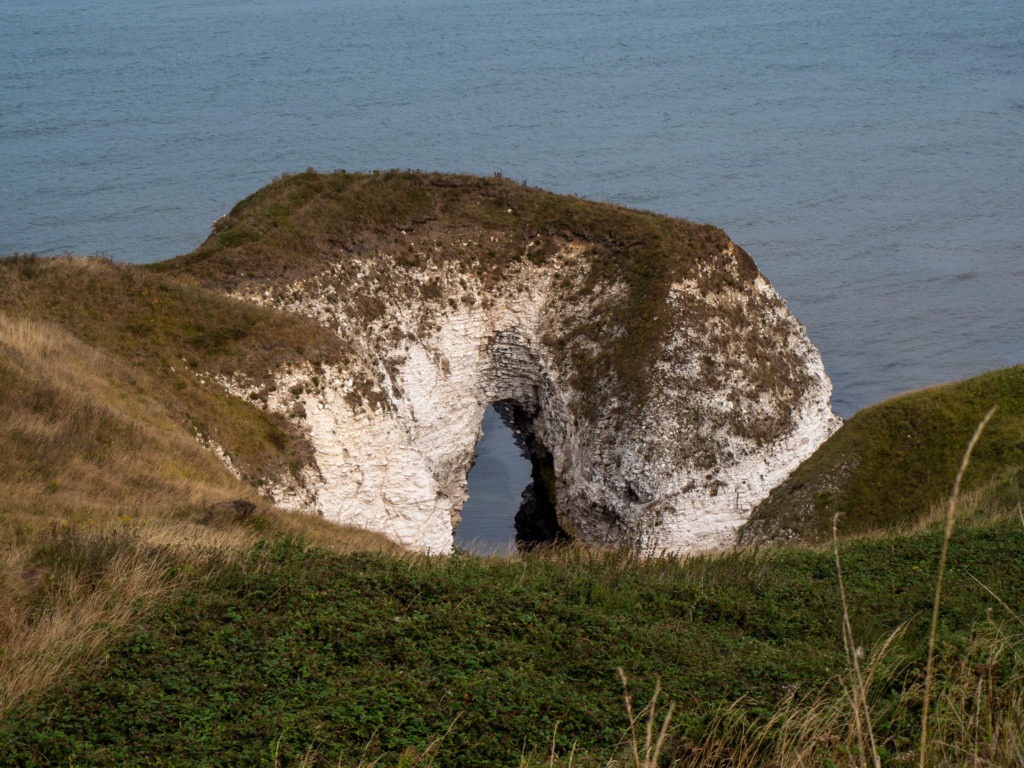
2) Bridlington
A sea-fishing port in the East Riding of Yorkshire, the town of Bridlington is the closest large town to Bempton Cliffs. Featuring beaches, shops and entertainment, Bridlington is a popular seaside holiday resort. It is also the largest lobster port in Europe, with over 300 tonnes of the crustaceans caught there each year.
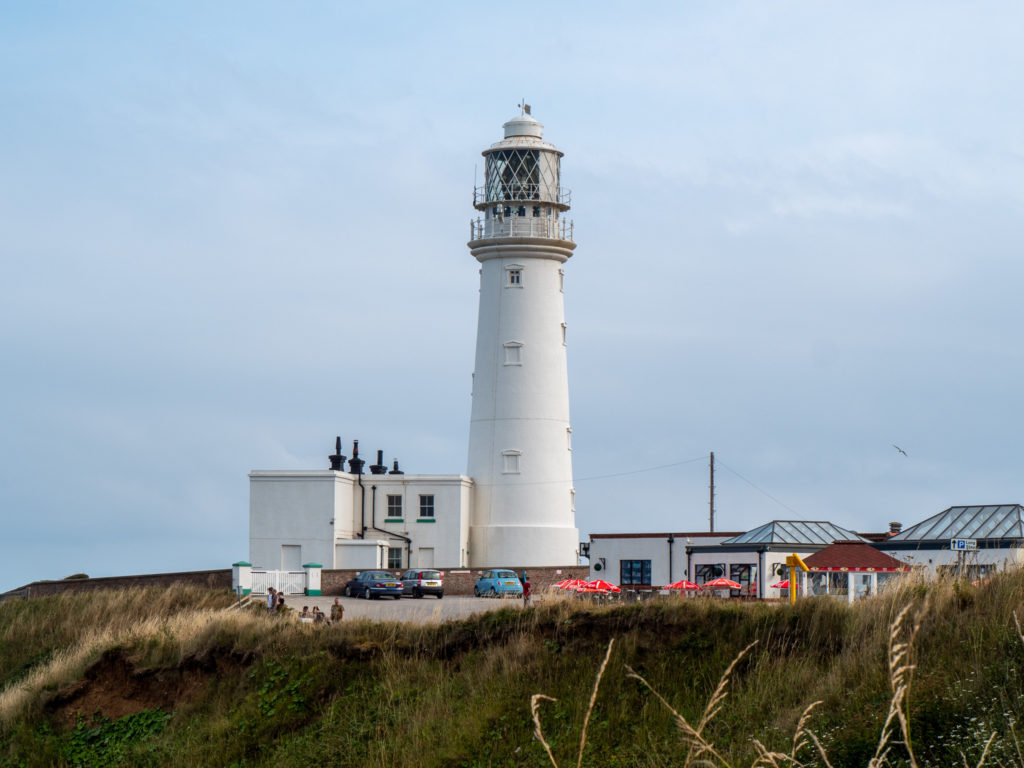
3) Whitby
Located at the mouth of the River Esk, Whitby is a charming coastal town with interesting history. Whitby was once a whaling town and a whale bone arch can still be found atop the hill on the west side of the river. It was here that Captain James Cook learned seamanship and left to explore the southern ocean onThe Endeavour. 199 steps lead up to the remains of the Gothic Whitby Abbey, a 7th century Christian monastery that later became a Benedictine abbey. Whitby was also the location that Dracula set foot in in Bram Stoker’s novel and the vampire is rumoured to be buried in St Mary’s churchyard.
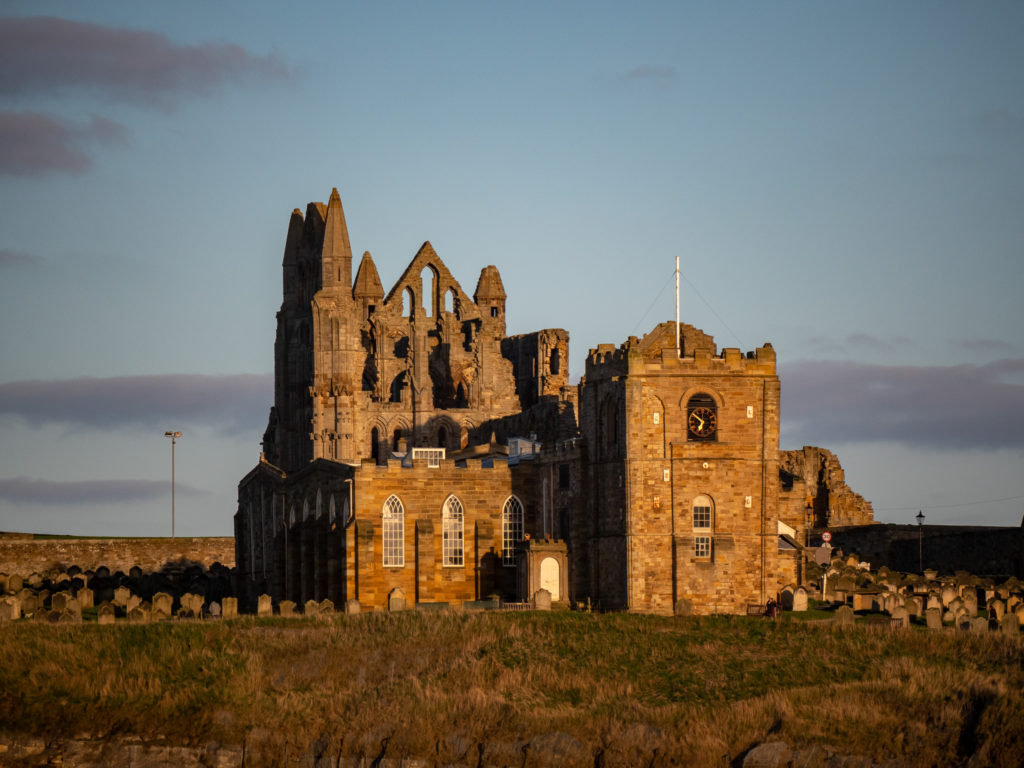
4) Sandsend
Just north of Whitby, Sandsend is a small village with a beautiful beach. For those who like walking, Sandsend provides easy access to Mulgrave Woods and the Cleveland Way, as well as footpaths leading inland and the beach (although this disappears at high tide). Sandsend is also one of our favourite places to spot dolphins on the Yorkshire Coast and we’ve seen them from the beach here several times.
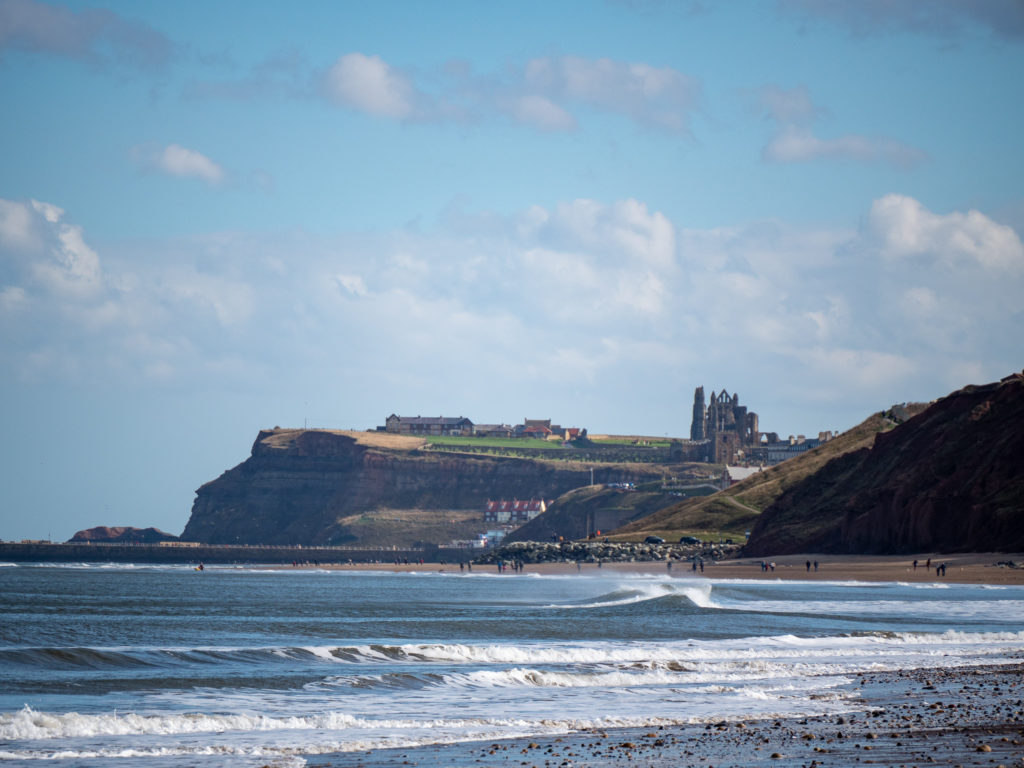
5) Scarborough
Often referred to as The Queen of the Yorkshire Coast, Scarborough is a large seaside resort town known for its historic amusement arcades and seafront themed rides. Split into two bays which are connected by a long seafront promenade, Scarborough is towered over by a 12th century castle. The town is also home to a Sea Life Centre and Peasholm Park, which frequently hosts concerts and events in the open air theatre.
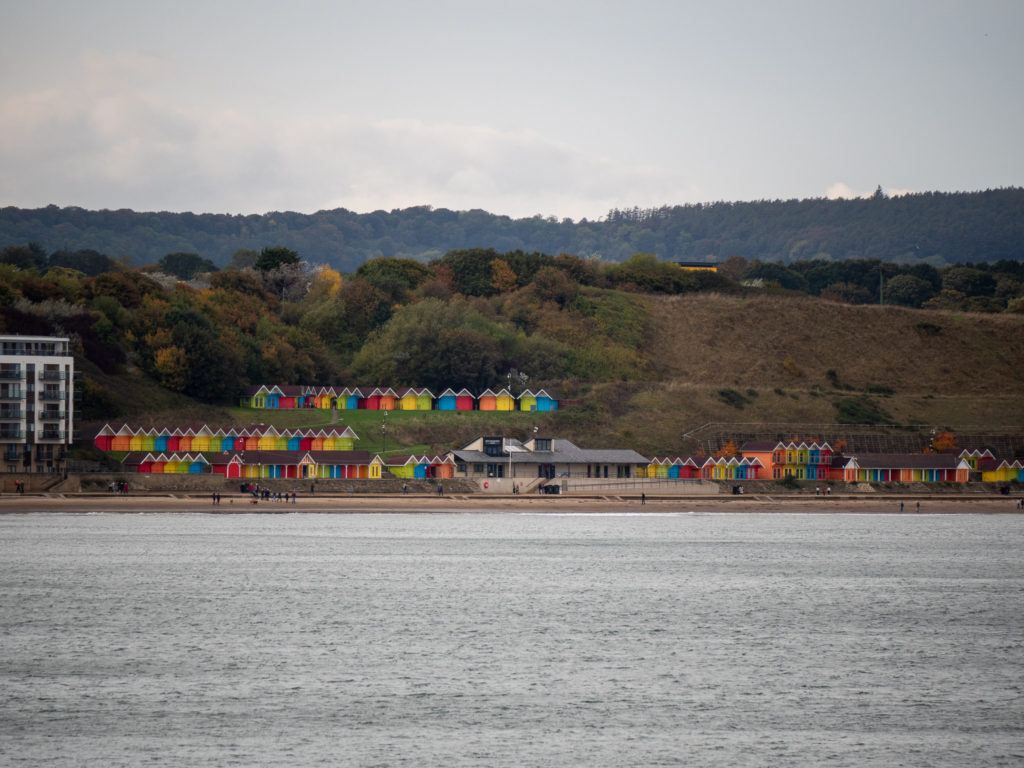
6) Robin Hood’s Bay
A small, quaint fishing village, Robin Hood’s Bay is located along the North Yorkshire and Cleveland Heritage Coast. Featuring sloped cobbled streets, boutique gift stores and a large beach, Robin Hood’s Bay gets its name from a myth that Robin Hood once saved the bay from pillaging pirates. The bay is a great place for a coastal walk, either on the cliff-tops, or on the beach itself where ancient fossils can be found.
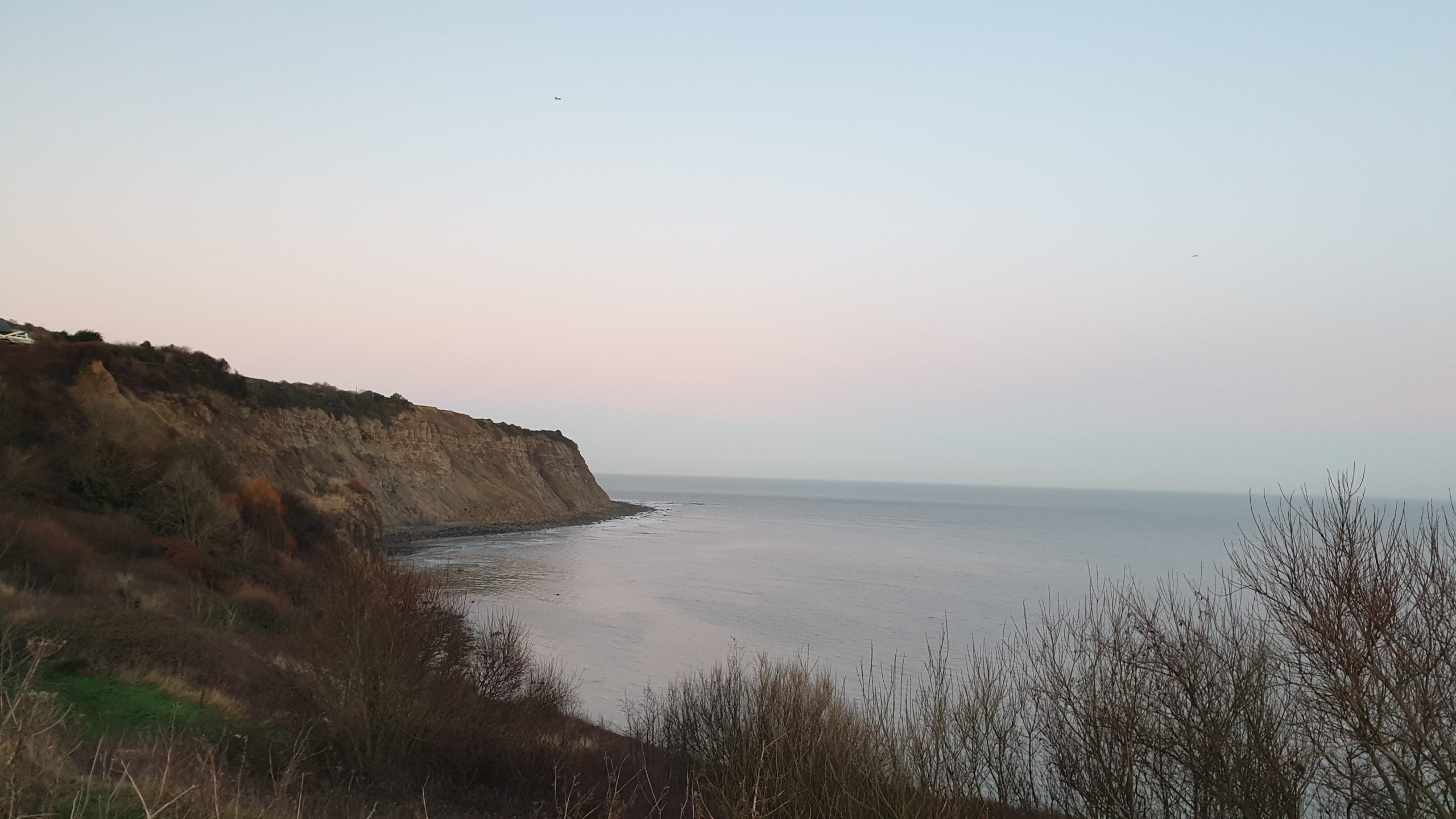
7) Filey
Situated in a bay of the same name, Filey is another seaside resort town, although smaller than Scarborough and Bridlington. The fishing village features a large sandy beach and award winning Parks and Gardens. The nearby Filey Brigg, a long narrow peninsula situated about a mile north of Filey, is a site of Special Scientific Interest, due to its geological importance.
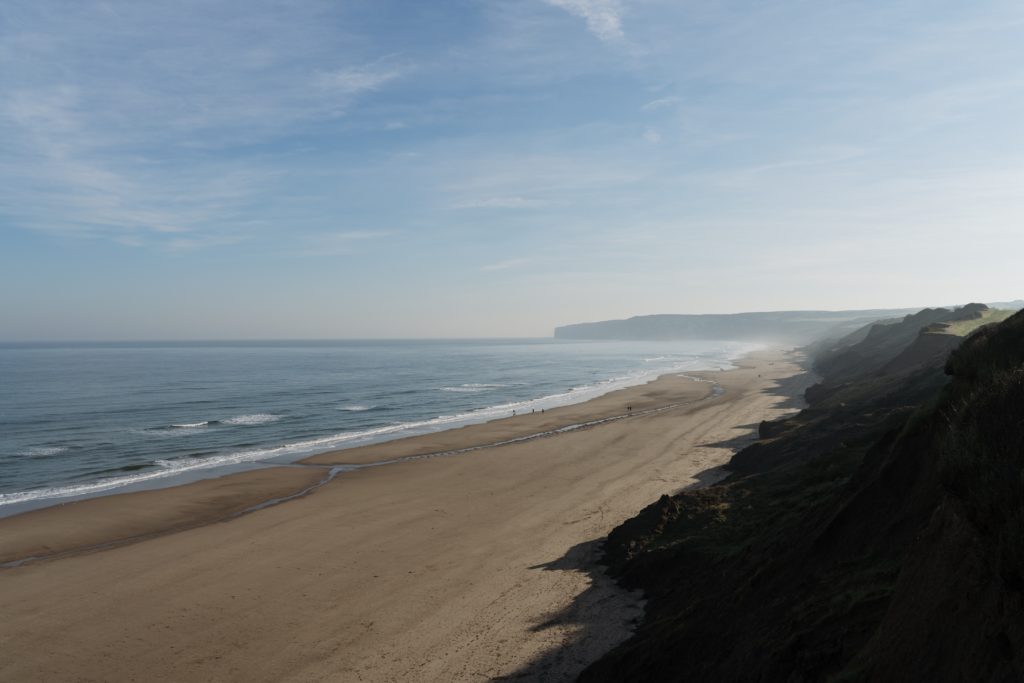
8) Runswick Bay
5 miles north of Whitby, Runswick Bay is a picturesque cliffside village that is popular for coastal walks and fossil hunting. It boasts a sprawling white-sand beach known as Runswick Sands. Runswick Bay is on the Cleveland Way, a National Trail that runs 110 miles (177km) between Helmsley and the Brigg at Filey, skirting the North York Moors National Park.
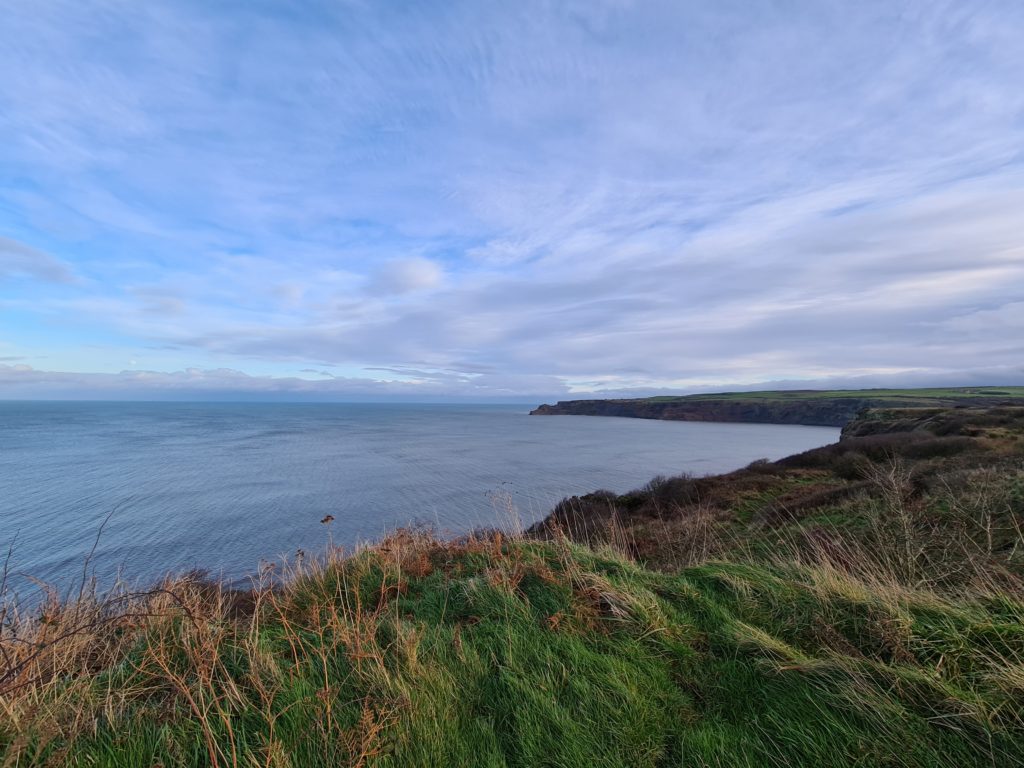
9) Staithes
Staithes is best known as the place James Cook came visited in 1745 at the age of 16 to apprentice to William Sanderson, a grocer and chandler. It is a seaside village in North Yorkshire. Staithes is the best place in Yorkshire to see migratory whales between August and October each year, although a boat trip is necessary. Types of whale spotted during this time include minke, humpback, sei and fin and booking in advance is necessary, as the trips can book up months in advance.
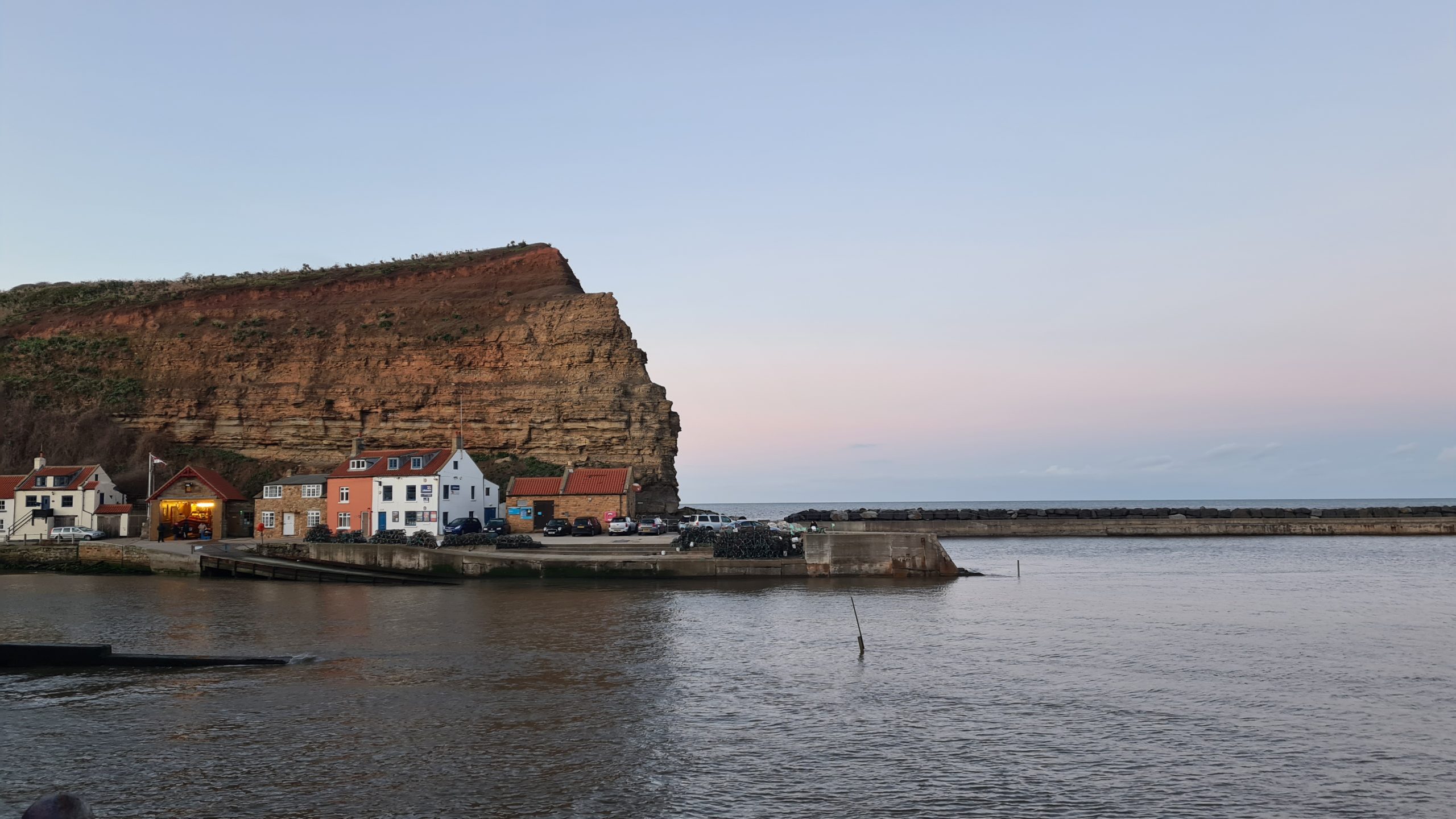
Read next:
Where And When To See Orca, Whales, Dolphins (+ Other Wildlife) in Orkney
The Best Wildlife Photography Camera Settings
Let’s Talk About Ethical Wildlife Tourism
Should You Touch A Grey Whale In Baja California Sur?
The Thorough Guide To Magdalena Bay Whales’ Grey Whale Camp
Everything You Need To Know About Blue Whale Watching In Loreto
Everything You Need To Know About Humpback Whale Watching In Los Cabos
Check us out on social media!
